
Deutsch-Chinesische Enzyklopädie, 德汉百科
 Cities founded by the Romans
Cities founded by the Romans
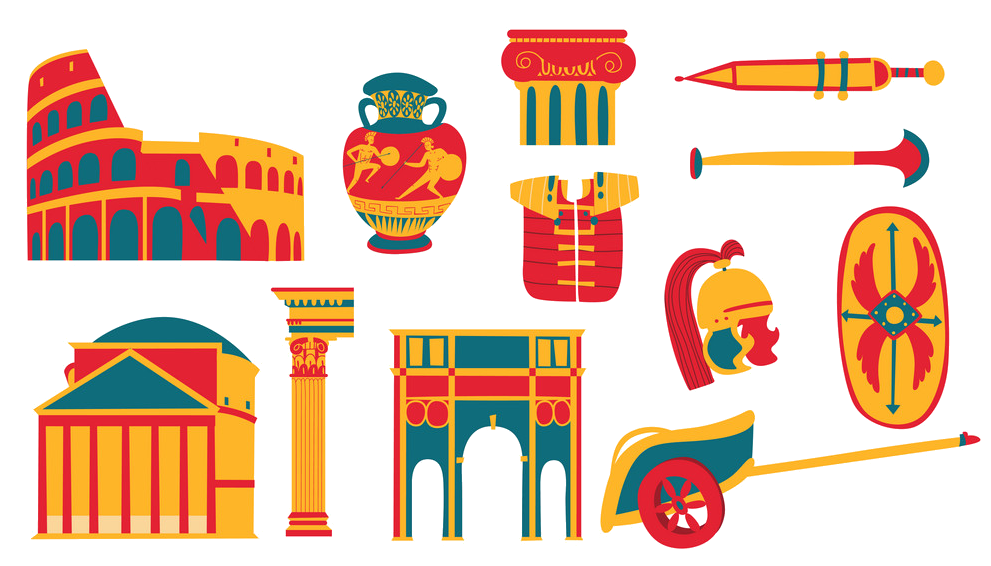
 England
England
 England
England
 Manchester
Manchester

 History
History
 ITU World Championship Series
ITU World Championship Series
 Silk road
Silk road

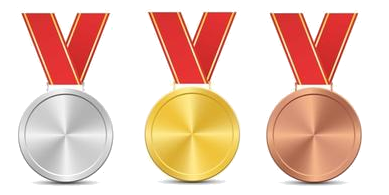 Sport
Sport
 Triathlon
Triathlon
 United Kingdom
United Kingdom

 Cities founded by the Romans
Cities founded by the Romans

 Important port
Important port
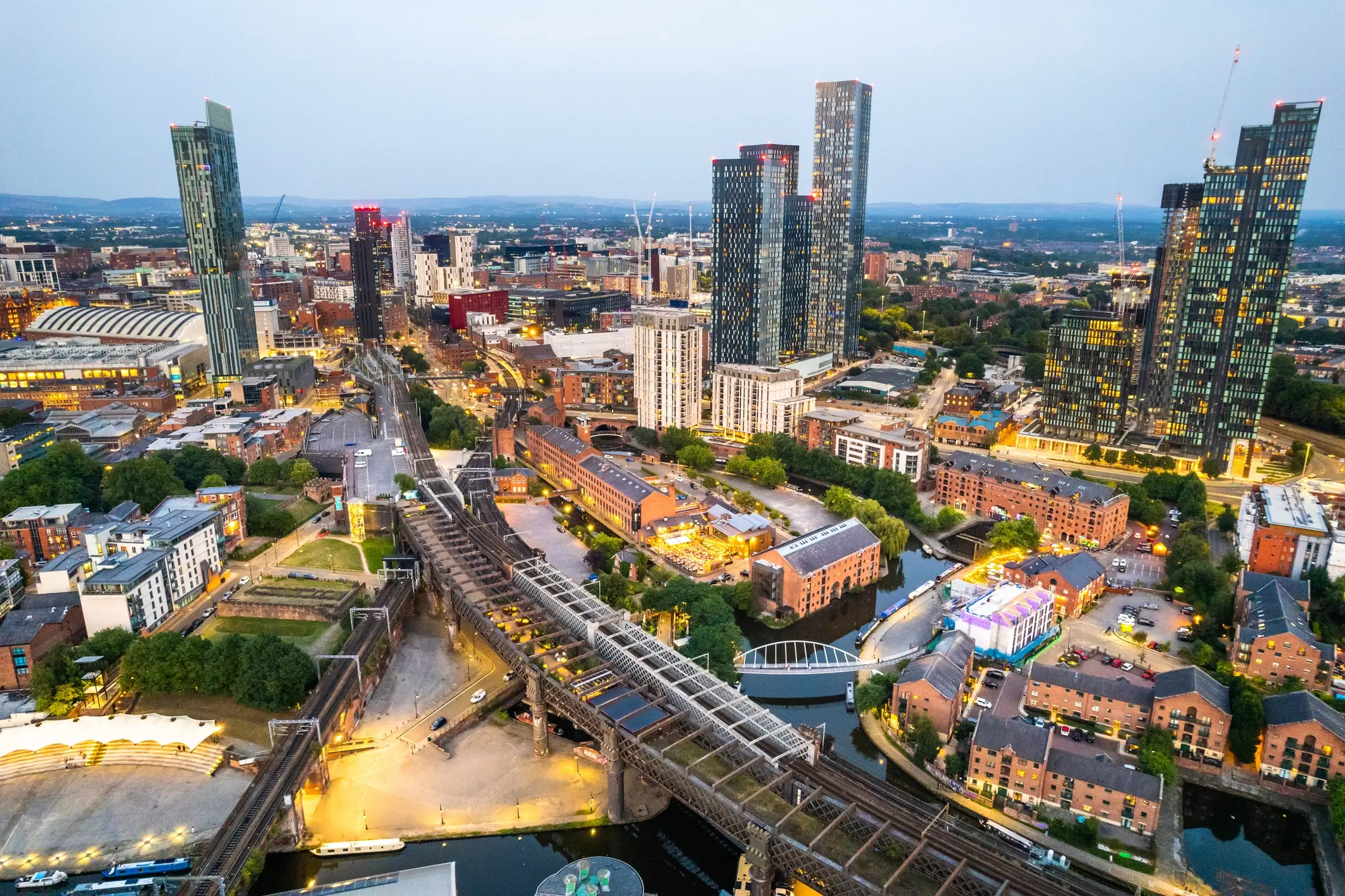
Manchester ([ˈmɛntʃɛstɐ], englisch [ˈmæntʃɪstə])[1] ist eine Stadt im Nordwesten von England im Vereinigten Königreich Großbritannien und Nordirland mit dem Status eines Metropolitan Borough sowie einer City. Sie hat etwa 570.000 Einwohner und liegt im Metropolitan County Greater Manchester, einer der größten Agglomerationen in England mit 2,9 Mio. Einwohnern (2022). Die Einwohner Manchesters werden „Mancunians“ oder verkürzt „Mancs“ genannt.
Die Ursprünge der Stadt Manchester gehen auf ein römisches Kastell am Zusammenfluss der Flüsse Irwell und Medlock zurück. Vor allem im Zeitalter der Industriellen Revolution wurde Manchester zu einem wichtigen Standort der Industrie. Einen besonderen Stellenwert nahm dabei die Textilindustrie ein, deren Anfänge in Manchester auf das Spätmittelalter zurückgehen. Im 20. Jahrhundert erfolgte der stetige Zerfall der Industrie. Heute ist Manchester dennoch eines der wichtigsten Wirtschaftszentren des Vereinigten Königreichs und beherbergt zahlreiche Museen, Hochschulen und Orte der Kunst und Kultur.
曼彻斯特市(英语:City of Manchester),即曼彻斯特(英语:Manchester),是英格兰的城市,都市自治市,位于西北英格兰区域,人口约为55万人,是曼彻斯特都市圈中人口最多的城市,且是英格兰西北第一多,英国第五多的城市。
曼彻斯特在工业革命史中有着重要位置。十八世纪,资本主义在这座城市萌芽,让本是农村地区的曼彻斯特经历急速发展并成为全世界第一座工业化的城市。全世界第一条城际通勤铁路在此诞生。因市内兴盛的纺织业,曼彻斯特在工业革命期间曾因仓库众多而闻名于世,使其获得了“仓库城市”的别称。曼彻斯特在科学技术史上也占有重要位置。成立于2002年的曼彻斯特大学及其前身见证了原子核物理学的诞生,世界上第一台存储程式电脑以及石墨烯的发现。
曼彻斯特被誉为“北方之都”[2][3],是英格兰北部一个极其重要的城市,尤其是在其经济、艺术、文化、交通运输、媒体和体育地位上。步入二十一世纪,曼彻斯特的发展愈发强势,为这座城市带来了与伯明翰竞争英国第二大城市的地位的资本[4]。
1974年,曼彻斯特与周围市镇联合组成大曼彻斯特郡,成为该郡的一个都会区。“曼彻斯特”此名常用来指整个都市区。整个大曼彻斯特的市区总人口在英国排名第二,仅次于伦敦。
マンチェスター (Manchester, IPA: [ˈmænˌtʃɪstə][ヘルプ/ファイル]) は、イングランドの北西部、グレーター・マンチェスターに位置する都市。北部イングランドを代表する都市であり、イギリスで9番目の都市である。1853年に市制(英語版)が布かれ、2011年の時点で、マンチェスター(都市と都市バラ)の人口は49万人である。2011年の近郊を含む都市圏人口は224万人であり、同国第3位である[2]。
[ˈmænˌtʃɪstə][ヘルプ/ファイル]) は、イングランドの北西部、グレーター・マンチェスターに位置する都市。北部イングランドを代表する都市であり、イギリスで9番目の都市である。1853年に市制(英語版)が布かれ、2011年の時点で、マンチェスター(都市と都市バラ)の人口は49万人である。2011年の近郊を含む都市圏人口は224万人であり、同国第3位である[2]。
Manchester (/ˈmæntʃɪstər, -tʃɛs-/)[5][6] is a city and metropolitan borough in Greater Manchester, England, with a population of 545,500 as of 2017.[7] It lies within the United Kingdom's third-most populous metropolitan area, with a population of 3.2 million.[8] Manchester is fringed by the Cheshire Plain to the south, the Pennines to the north and east, and an arc of towns with which it forms a continuous conurbation. The local authority is Manchester City Council.
The recorded history of Manchester began with the civilian settlement associated with the Roman fort of Mamucium or Mancunium, which was established in about AD 79 on a sandstone bluff near the confluence of the rivers Medlock and Irwell. It was historically a part of Lancashire, although areas of Cheshire south of the River Mersey were incorporated in the 20th century.[9] Throughout the Middle Ages Manchester remained a manorial township but began to expand "at an astonishing rate" around the turn of the 19th century. Manchester's unplanned urbanisation was brought on by a boom in textile manufacture during the Industrial Revolution,[10] and resulted in it becoming the world's first industrialised city.[11]
Manchester achieved city status in 1853. The Manchester Ship Canal opened in 1894, creating the Port of Manchester and directly linking the city to the Irish Sea, 36 miles (58 km) to the west. Its fortune declined after the Second World War, owing to deindustrialisation, but the IRA bombing in 1996 led to extensive investment and regeneration.[12]
In 2014, the Globalization and World Cities Research Network ranked Manchester as a beta world city, the highest-ranked British city apart from London.[13] Manchester is the third-most visited city in the UK, after London and Edinburgh.[14] It is notable for its architecture, culture, musical exports, media links, scientific and engineering output, social impact, sports clubs and transport connections. Manchester Liverpool Road railway station was the world's first inter-city passenger railway station; scientists first split the atom, developed the stored-program computer and produced graphene in the city. Manchester hosted the 2002 Commonwealth Games.
Manchester Ecoutez (ˈmanˌtʃɪstə) est une ville du Royaume-Uni située dans le comté métropolitain du Grand Manchester. Elle a le statut de cité depuis 1853 et compte 545 500 habitants en 2017. Elle est parfois considérée comme la « deuxième ville d’Angleterre » grâce à son importance économique, culturelle et sportive1, bien que sa superficie et sa population ne lui permettent pas de détrôner Birmingham. Manchester est catégorisée comme une ville « bêta » par Le GaWC (Réseau d’étude sur la mondialisation et les villes mondiales2). Ses habitants s'appellent les Mancunien(ne)s. La ville est au cœur d'une grande agglomération de plus de deux millions et demi d'habitants dont les villes principales sont : Bury, Bolton, Rochdale, Oldham, Ashton-under-Lyne, Stockport, Salford, Altrincham, Wigan. Le nom de « Manchester » est utilisé aussi bien pour désigner l'agglomération que la ville en tant que telle.
Manchester est située à 260 km au nord-ouest de Londres, sur la rive est de la rivière Irwell. La ville est bordée au Sud par la plaine du Cheshire et au Nord et à l'Est par la chaîne montagneuse des Pennines. Historiquement, la majeure partie de la ville faisait partie du Lancashire, mais des zones situées au sud de la rivière Mersey appartenaient au Cheshire. Le vicus créé par les Romains à proximité du fort de Mamucium, construit en 79 sur un monticule rocheux non loin de la confluence entre la Medlock et l'Irwell, est devenu au fil de son histoire une ville majeure du nord de l'Angleterre. Manchester est la première ville au monde à avoir été industrialisée, et elle a joué un rôle important durant la révolution industrielle. Durant le XIXe siècle, la ville acquiert d'ailleurs le surnom de « Cottonopolis » en raison de son importante industrie cotonnière. L'économie de la ville s'est depuis tournée vers le secteur tertiaire, et il s'agit aujourd'hui d'un pôle financier important.
Manchester est une ville importante culturellement, qui héberge de nombreux théâtres, musées et salles de concert. La ville a vu dans les années 1980 l'émergence de divers groupes de rock indépendant autour du club The Haçienda, qui deviendront très célèbres par la suite et que l'on regroupe sous l'appellation « Madchester ». Elle a une économie nocturne bien développée avec de nombreux bars et clubs. La ville est le siège de divers médias, dont de nombreuses stations de radios, des journaux et une importante base de la BBC. L'architecture de la ville est marquée par l'omniprésence des briques rouges. Elle mêle des bâtiments historiques, comme la cathédrale gothique, des édifices de l'époque victorienne et de la période industrielle, avec des bâtiments à l'architecture contemporaine, dont de hauts gratte-ciel. Manchester est la troisième ville la plus visitée par les étrangers au Royaume-Uni.
Manchester est également une importante ville étudiante avec ses deux universités, l'université de Manchester et l'université métropolitaine de Manchester qui, avec entre-autres le Royal Northern College of Music, regroupent plus de 70 000 étudiants.
La ville accueillit en 2002 les jeux du Commonwealth. Elle se démarque également dans le monde sportif par ses deux équipes de Premier League de football, Manchester United et Manchester City.
Manchester (AFI: /ˈmanʧester/[3]; in inglese [ˈmantʃɪstə][4]), in italiano antico Mancunia, è un borgo metropolitano di 503.127 abitanti del Regno Unito, che gode del titolo onorifico di città, ed è capoluogo della contea metropolitana inglese della Greater Manchester. Insediamento celtico poi rinominata dagli antichi romani magna castra, i suoi abitanti vengono chiamati Mancunians (Mancuniani).
Mánchester1 (pronunciado en inglés  /ˈmæntʃɛstə/ (?·i)) es una ciudad y un municipio metropolitano del condado de Gran Mánchester en Inglaterra. Mánchester obtuvo su estatus de ciudad en 1853 y tenía una población estimada de 530.300 habitantes en 2015.2 A su vez, forma parte de la segunda aglomeración urbana del Reino Unido y decimocuarta de la Unión Europea en términos de población.
/ˈmæntʃɛstə/ (?·i)) es una ciudad y un municipio metropolitano del condado de Gran Mánchester en Inglaterra. Mánchester obtuvo su estatus de ciudad en 1853 y tenía una población estimada de 530.300 habitantes en 2015.2 A su vez, forma parte de la segunda aglomeración urbana del Reino Unido y decimocuarta de la Unión Europea en términos de población.
Mánchester es un importante centro artístico, financiero, de medios de comunicación y de educación superior. En una encuesta de líderes empresariales británicos publicada en 2006, Mánchester era considerada como el mejor lugar en el Reino Unido para establecer un negocio. Un informe encargado por la Asociación de Mánchester, publicado en 2007, mostró a Mánchester como la "ciudad con más rápido crecimiento económico". Es la tercera ciudad más visitada en el Reino Unido por turistas extranjeros. Mánchester fue la anfitriona de los Juegos de la Mancomunidad de 2002, y es sede de dos equipos de fútbol de la Premier League, Manchester United y Manchester City.
Históricamente la mayor parte de la ciudad fue parte del condado de Lancashire, con las zonas ubicadas al sur del río Mersey en el condado de Cheshire. Mánchester fue la primera ciudad industrializada del mundo y desempeñó un papel central durante la Revolución industrial. Se convirtió en el principal centro internacional de la fabricación textil y de hilado de algodón. Durante el siglo XIX adquirió el apodo de "Cottonopolis", sugiriendo que era una metrópoli de las fábricas de algodón. El centro de la ciudad se encuentra en una lista provisional del Patrimonio de la Humanidad de la Unesco, debido principalmente a la red de canales y molinos construidos durante los siglos XVIII y XIX.
Манче́стер[2] (англ. Manchester ['mænʧɪstə]) — город и метрополитенский район в Северо-Западной Англии, графство Большой Манчестер. Менее чем полумиллионный город имеет крупнейшую в регионе 2,2-миллионную агломерацию Большой Манчестер. Девятый по величине город Великобритании (и восьмой — Англии).
Наряду с Бирмингемом, Лидсом, Шеффилдом, Ливерпулем и Лондоном Манчестер был одним из центров Промышленной революции. В настоящее время Манчестер — крупный культурный, промышленный, финансовый, коммерческий и транспортный центр страны. Развито машиностроение, текстильная, химическая, лёгкая, бумажная промышленность. Действует морской порт. Манчестерский университет является одним из самых престижных в Великобритании. Имеется городской музей и художественная галерея[3].



这座城市繁盛的历史可追溯到古罗马时期,这里曾经是马略卡帝国的都城。帕尔玛是在该地区早先生活的居民部落为基本,由罗马人建立的。在占领了马略卡后, 该地区于公元前123年被并入塔兰亢恩西斯省(province of Tarraconensis)。当时,罗马人建立了两座新城市,而帕尔玛就是其中之一。
如今,市内一些历史建筑多为哥德式建筑。由于这座美丽的小岛四周被白色的沙滩、蔚蓝的大海包裹起来,故旅游业非常发达。
帕尔玛旅游业的发达自然少不了巴利阿里群岛整体的功劳。该群岛由一系列的岛屿组成,这些岛屿之间既有许多共同点,也存在着不少明显的差异,自20世纪以来就已经成为了欧洲最浪漫的旅游圣地,无数人纷纷前往,体验那里的浪漫时光。
帕尔玛,自铜器时代以来,在数千年的漫长历史光阴中,游客、侵略者以及征服者都在这座岛上(城市中)以各自不同的方式留下了印记。岛上的建筑遗址风格涉 及腓尼基和迦太基、阿拉伯、希腊和罗马风格。虽然整个帕尔玛是个熙攘散乱的小城,但大多数精彩的部分都集中在相对较小的区域,即老城及其附近。
除了教堂、博物馆、海洋公园、阿拉伯风格的花园外,当地的餐厅和酒吧也可以让游客好好地享受一番。 (Quelle: http://www.youabc.com)

 Architecture
Architecture
 Eurovision Song Contest,ESC
Eurovision Song Contest,ESC
 FIFA Fussball-Weltmeisterschaft 1998
FIFA Fussball-Weltmeisterschaft 1998

 Financial
Financial
 ***Global Financial Center
***Global Financial Center
 France
France
 UEFA European Championship 2016
UEFA European Championship 2016
 Women's Soccer World Cup 2019
Women's Soccer World Cup 2019

 History
History
 N 2000 - 2100 AD
N 2000 - 2100 AD

 Ile-de-France
Ile-de-France

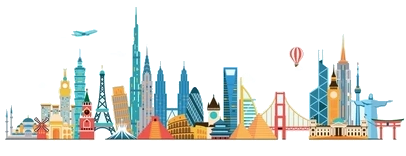 International cities
International cities
 *European Capital of Culture
*European Capital of Culture

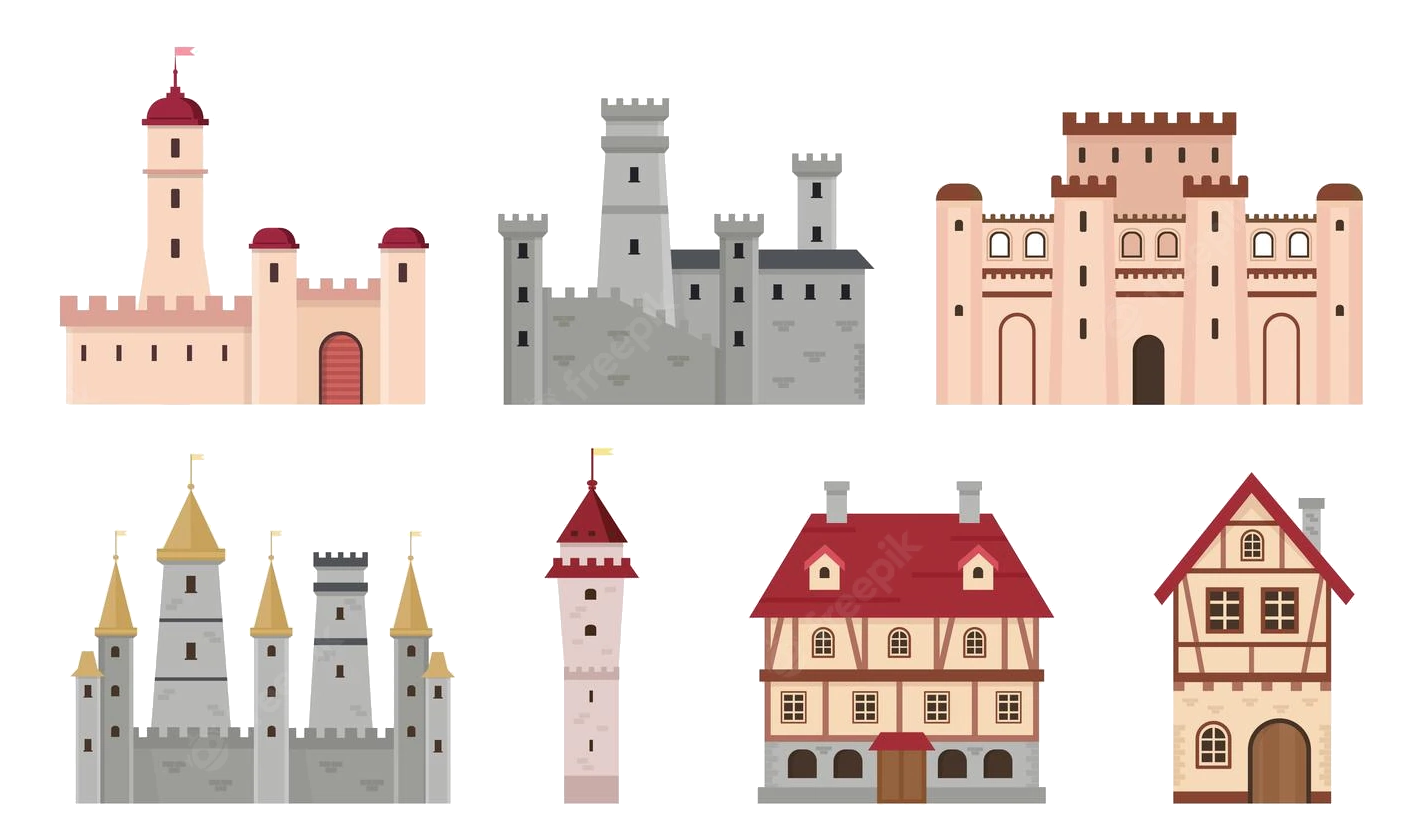 Medieval cities in Europe
Medieval cities in Europe
 Olympic Summer Games
Olympic Summer Games

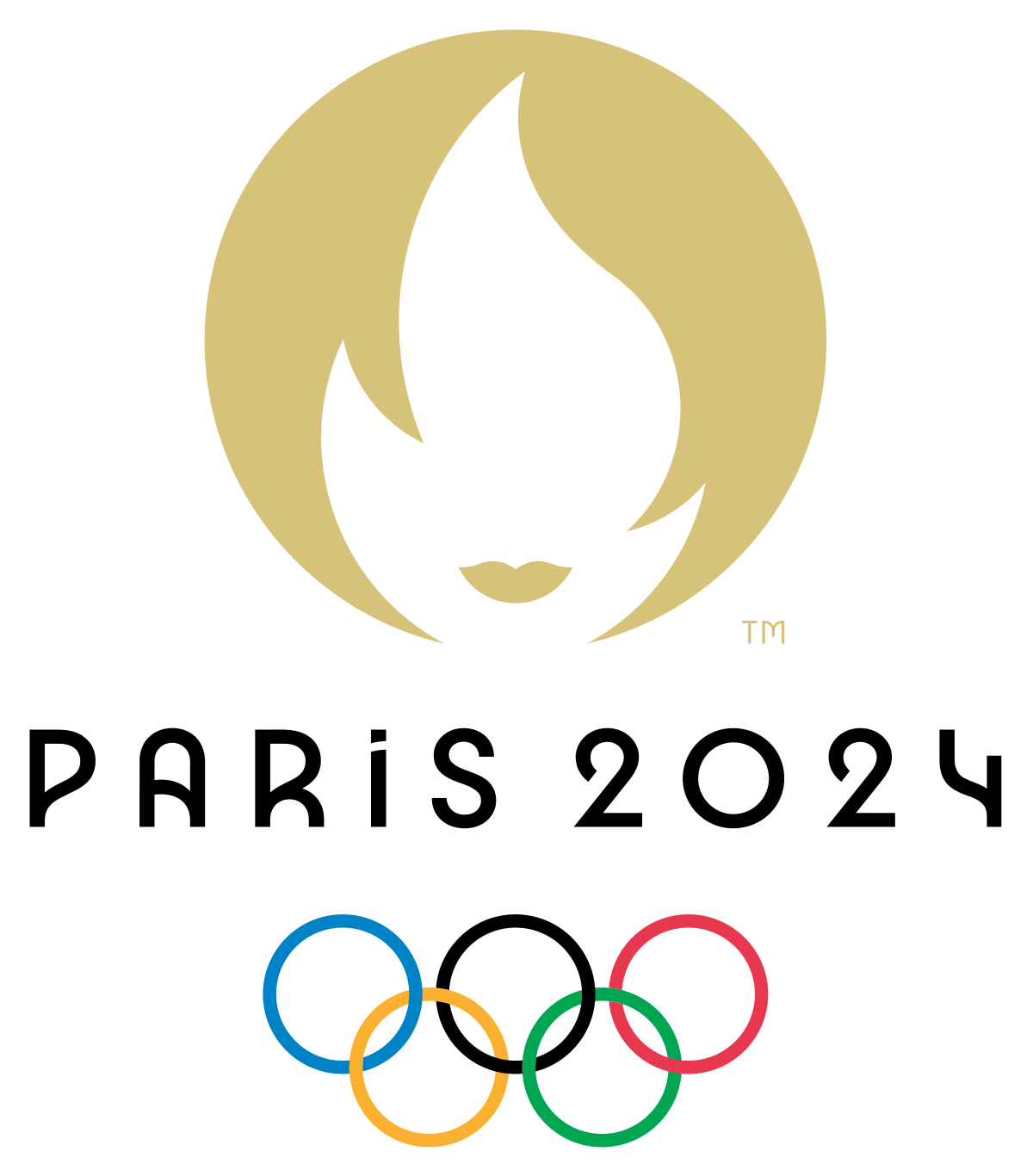 2024 Summer Olympics
2024 Summer Olympics
 Silk road
Silk road
 Seine
Seine

 Cities founded by the Romans
Cities founded by the Romans

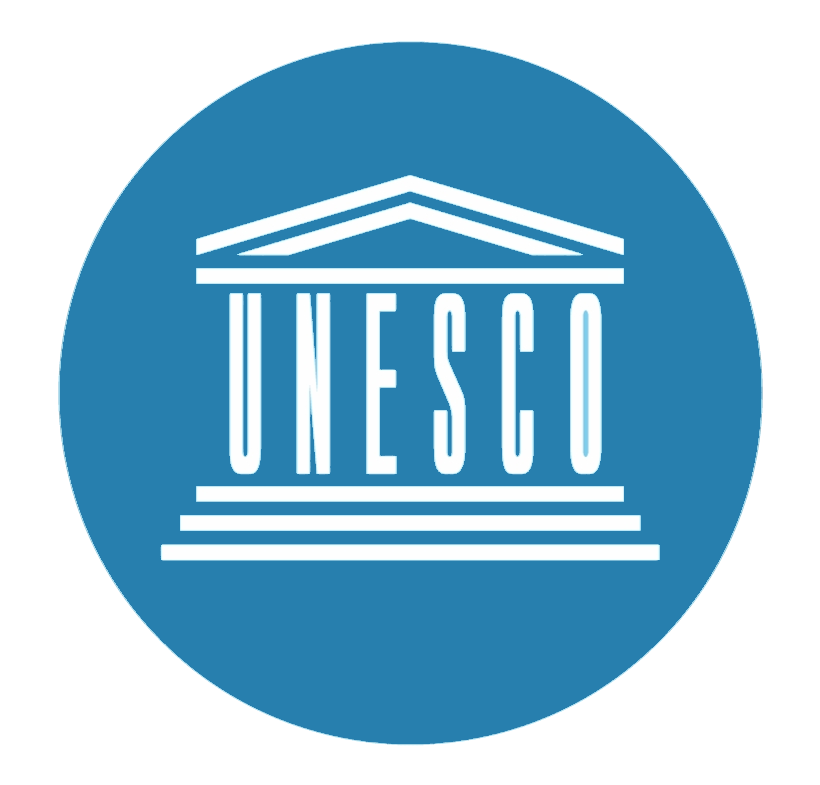 World Heritage
World Heritage

巴黎市(法语:Paris)是法国的首都和最大城市,也是法国的政治与文化中心。其隶属法兰西岛大区之下的巴黎省(编号第75省;仅辖有1个同名的省区与市镇),也是法兰西岛大区的核心。目前所谓的巴黎市辖区范围大至仅为旧巴黎城墙内(环城道路内侧),并未包含巴黎扩张发展的大巴黎实际都市区域,巴黎市辖区内依照发展历史共分成20个区,,自从1860年代开始就没有重大变化。截至2009年为止,巴黎市内人口超过223万[1] ,巴黎都会区的人口逾1,200万[2] ,是欧洲最大的都会区之一[3]。
巴黎在将近1,000年的时间中是西方世界最大的城市,也曾经是世界上最大的城市(16世纪至19世纪之间)[4][5][6]。目前是世界上最重要的政治与文化中心之一,对于教育、娱乐、时尚、科学、媒体、艺术与政治等方面皆有重大影响力,被认为是世界上最重要的全球城市之一[7][8][9][10] ,一般普世观念上与日本东京、美国纽约、英国伦敦并列世界四大国际级都市。许多国际组织都将总部设立在巴黎,例如联合国教育、科学及文化组织、经济合作与发展组织、国际商会或巴黎俱乐部等。巴黎也是欧洲绿化最深[11] 与最适合人类居住的城市之一[12] ,也是世界上生活费用最高的城市之一[13][14]。
巴黎与法兰西岛大区大约贡献法国4分之1的国内生产总值,在2009年为5,521亿欧元[15] 。根据估计,巴黎是欧洲第一[16] 或第二大城市经济体,也是世界上第六大城市经济体[17]〈按购买力平价PPP调整〉。总共有33间财富世界500强企业的总部设立在巴黎都会区[18],是欧洲最集中的地区。巴黎市辖区范围外的商业区拉德芳斯是欧洲最大的中央商务办公区[19]。巴黎的高等教育机构是欧盟最集中的地区[20],高等教育研究与发展支出也是欧洲最高的地区。巴黎也被认为是世界上最适合研发创新的城市之一[21]。每年有4,200万人造访巴黎与邻近都会区,也让巴黎成为世界上最多观光客造访的城市[20]。巴黎与与邻近都会区总共有3,800个法国国家遗产与4个世界遗产[20]。巴黎也是1989年的欧洲文化之城。
Paris (deutsch: [paˈʁiːs] ![]()
![]() ; französisch: [paʁi]
; französisch: [paʁi] ![]()
![]() ) ist die Hauptstadt der Französischen Republik, Hauptort der Region Île-de-France und Globalstadt. Mit rund 2,13 Millionen Einwohnern ist Paris die viertgrößte Stadt der Europäischen Union (EU). Der Großraum ist mit über 12,5 Millionen Menschen die größte Metropolregion der EU.[1][2][3][4]
) ist die Hauptstadt der Französischen Republik, Hauptort der Region Île-de-France und Globalstadt. Mit rund 2,13 Millionen Einwohnern ist Paris die viertgrößte Stadt der Europäischen Union (EU). Der Großraum ist mit über 12,5 Millionen Menschen die größte Metropolregion der EU.[1][2][3][4]
Mit einer vergleichsweise kleinen Stadtfläche von 105,40 Quadratkilometern ist Paris mit 20.238 Einwohnern pro Quadratkilometer die am dichtesten besiedelte Großstadt Europas. Das zusammenhängend bebaute städtische Siedlungsgebiet (Unité urbaine de Paris) ist 2845 Quadratkilometer groß und geht somit weit über die politische Grenze der Stadt Paris hinaus. 2015 zählte die Unité urbaine de Paris 10.706.072 Einwohner, was einer Bevölkerungsdichte von 3763 Einwohnern je Quadratkilometer entspricht und womit Paris zu den Megastädten zählt.[5] Paris ist das politische, wirtschaftliche sowie kulturelle Zentrum des zentralistisch organisierten Frankreichs und mit vier Flughäfen und sechs Kopfbahnhöfen dessen größter Verkehrsknotenpunkt. Teile des Seineufers zählen heute zum UNESCO-Welterbe. Die Stadt ist Sitz der UNESCO und darüber hinaus der OECD und der ICC. Sehenswürdigkeiten wie der Eiffelturm, die Kathedrale Notre-Dame oder der Louvre machen die Stadt zu einem beliebten Touristenziel. Mit rund 16 Millionen ausländischen Touristen pro Jahr ist die Stadt hinter London und Bangkok eine der meistbesuchten Städte weltweit.[6]
Das heutige Paris entwickelte sich seit dem 3. Jahrhundert v. Chr. aus der keltischen Siedlung „Lutetia“ auf der Île de la Cité. Später errichteten die Römer an der Seine eine Stadt, die im 6. Jahrhundert zunächst eine Hauptresidenz des Fränkischen Reiches wurde. Eine Blütezeit der Kunst und Kultur erlebte Paris im 16. Jahrhundert unter Franz I. Durch den Absolutismus, insbesondere unter Ludwig XIV. im 17. Jahrhundert, wurde die Stadt um zahlreiche barocke Gebäude und Prachtstraßen bereichert und so zu einem beispielhaften Muster für barocken Städtebau. Obwohl die Königsresidenz 1682 nach Versailles verlegt wurde, blieb Paris aufgrund seiner politischen und wirtschaftlichen Bedeutung das Zentrum des Landes. Mit der Französischen Revolution kam ab 1789 eine welthistorische Bedeutung zu. Die Industrialisierung führte im 19. Jahrhundert zu einem enormen Bevölkerungszuwachs, sodass 1846 erstmals die Grenze von einer Million Einwohnern überschritten wurde. In den folgenden Jahrzehnten bekam die Stadt durch die sogenannte Belle Époque und sechs Weltausstellungen weltweite Beachtung.
パリ(仏: Paris[1]、巴里)は、フランス北部、イル=ド=フランス地域圏にある都市。フランスの首都であり、イル=ド=フランス地域圏の首府である。
フランス最大の都市であり、同国の政治、経済、文化などの中心である。ロンドン、ニューヨーク、香港、東京などと並ぶ世界トップクラスの世界都市でもある。行政上では、1コミューン単独で県を構成する特別市であり、ルーヴル美術館を含む1区を中心に、時計回りに20の行政区が並ぶ(エスカルゴと形容される[2])。
市域はティエールの城壁跡に造られた環状高速道路の内側の市街地(面積は86.99km2。参考:東京都・山手線の内側は63km2、ニューヨーク市・マンハッタンは59km2)、および、その外側西部のブローニュの森と外側東部のヴァンセンヌの森を併せた形となっており、面積は105.40 km2。ケスタ地形を呈するパリ盆地のほぼ中央に位置し、市内をセーヌ川が貫く。この川の中州であるシテ島を中心に発達した。市内の地形は比較的平坦であるが、標高は最低でセーヌ川沿いの35メートル、最高でモンマルトルの丘の130メートルである[3]。北緯49度とやや高緯度に位置するが、温かい北大西洋海流と偏西風によって一年を通して比較的温暖となっており、西岸海洋性気候の代表的な都市である。
世界有数の大都市であり、アメリカのシンクタンクが2017年に発表した総合的な世界都市ランキングにおいて、ロンドン、ニューヨークに次ぐ世界3位の都市と評価された[4]。日本の民間シンクタンクによる2017年発表の「世界の都市総合力ランキング」(森記念財団都市戦略研究所、森ビル)では、ロンドン、ニューヨーク、東京に次ぐ世界4位の都市と評価された[5]。フランス経済の中心地で、世界屈指の経済都市であり、多国籍企業の本社数や資本市場の規模などビジネス分野を総合評価した都市ランキングでは、ロンドンと共にヨーロッパでトップクラスであり、世界500大企業の本社数では、ニューヨークやロンドンを凌ぎ、西洋の都市では最多である。2014年のアメリカのダウ・ジョーンズらの調査によると、世界7位の金融センターと評価されており、欧州ではロンドンに次ぐ2位である[6]。
パリは年間外国人観光客数が世界一の観光都市である。歴史的な建物を観ることができ、ルーヴル美術館、ポンピドゥーセンターなどを始めとした一流の美術館で厖大な数の一流の美術品を観賞できる。また世界最古のバレエ団や、世界で最も古くから存在している劇団などの公演を楽しむこともできる。
パリ出身者・居住者は男性がパリジャン(仏: Parisien、フランス語発音: [parizjɛ̃] パリズィヤン)、女性がパリジェンヌ(仏: Parisienne、フランス語発音: [parizjɛn] パリズィエンヌ)と呼ばれる。1960年代以降、旧植民地であったアフリカ中部・北部やインドシナ半島、更に近年は中近東や東欧、中国などからの移民も増え、パリジャン・パリジェンヌも多民族・多人種化している。
市域人口は1950年代の約290万人を絶頂に減少し続けたが、ここ数年は微増傾向に転じており、2011年現在で約225万人である(INSEEによる)。2011年の近郊を含む都市的地域の人口では1,200万人を超えており、ロンドンを凌ぐEU最大の都市部を形成している[7]。
Paris (French pronunciation: [paʁi] (![]() listen)) is the capital and most populous city of France, with an area of 105 square kilometres (41 square miles) and a population of 2,206,488.[5][6] Since the 17th century, Paris has been one of Europe's major centres of finance, commerce, fashion, science, music, and painting. The Paris Region had a GDP of €681 billion (US$850 billion) in 2016, accounting for 31 per cent of the GDP of France.[7] In 2013–2014, the Paris Region had the third-highest GDP in the world and the largest regional GDP in the EU. According to the Economist Intelligence Unit Worldwide Cost of Living Survey in 2018, Paris was the second-most expensive city in the world, behind Singapore and ahead of Zurich, Hong Kong, Oslo and Geneva.[8]
listen)) is the capital and most populous city of France, with an area of 105 square kilometres (41 square miles) and a population of 2,206,488.[5][6] Since the 17th century, Paris has been one of Europe's major centres of finance, commerce, fashion, science, music, and painting. The Paris Region had a GDP of €681 billion (US$850 billion) in 2016, accounting for 31 per cent of the GDP of France.[7] In 2013–2014, the Paris Region had the third-highest GDP in the world and the largest regional GDP in the EU. According to the Economist Intelligence Unit Worldwide Cost of Living Survey in 2018, Paris was the second-most expensive city in the world, behind Singapore and ahead of Zurich, Hong Kong, Oslo and Geneva.[8]
The City of Paris's administrative limits form an East-West oval centred on the island at its historical heart, the Île de la Cité; this island is near the top of an arc of the river Seine that divides the city into southern Rive Gauche (Left Bank) and northern Rive Droite regions. Paris is the core of a built-up area that extends well beyond its limits: commonly referred to as the agglomération Parisienne, and statistically as a unité urbaine (a measure of urban area), the Paris agglomeration's 2013 population of 10,601,122 made it the largest urban area in the European Union.[3][not in citation given] City-influenced commuter activity reaches well beyond even this in a statistical aire urbaine de Paris (a measure of metropolitan area), that had a 2013 population of 12,405,426,[9] a number one-fifth the population of France,[10] the largest metropolitan area in the Eurozone.
The city is a major rail, highway, and air-transport hub served by two international airports: Paris-Charles de Gaulle (the second busiest airport in Europe after London Heathrow Airport with 69.5 million passengers in 2017) and Paris-Orly.[11][12] Opened in 1900, the city's subway system, the Paris Métro, serves 5.23 million passengers daily,[13] and is the second busiest metro system in Europe after Moscow Metro. Paris's Gare du Nord is one of the ten busiest railway stations in the world, with 262 million passengers in 2015.[14]
Paris is especially known for its museums and architectural landmarks: the Louvre was the most visited art museum in the world in 2017, with 8.1 million visitors.[15][16] The Musée d'Orsay and Musée de l'Orangerie are noted for their collections of French Impressionist art, and the Pompidou Centre Musée National d'Art Moderne has the largest collection of modern and contemporary art in Europe. The historical district along the Seine in the city centre is classified as a UNESCO Heritage Site. Popular landmarks in the centre of the city include the Cathedral of Notre Dame de Paris and the Gothic royal chapel of Sainte-Chapelle, both on the Île de la Cité; the Eiffel Tower, constructed for the Paris Universal Exposition of 1889; the Grand Palais and Petit Palais, built for the Paris Universal Exposition of 1900; the Arc de Triomphe on the Champs-Élysées, and the Basilica of Sacré-Coeur on the hill of Montmartre. Paris received 23 million visitors in 2017, measured by hotel stays, with the largest numbers of foreign visitors coming from the United States, the UK, Germany and China.[17][18] It was ranked as the third most visited travel destination in the world in 2017, after Bangkok and London.[19]
The football club Paris Saint-Germain and the rugby union club Stade Français are based in Paris. The 80,000-seat Stade de France, built for the 1998 FIFA World Cup, is located just north of Paris in the neighbouring commune of Saint-Denis. Paris hosts the annual French Open Grand Slam tennis tournament on the red clay of Roland Garros. Paris hosted the Olympic Games in 1900, 1924 and will host the 2024 Summer Olympics. The 1938 and 1998 FIFA World Cups, the 2007 Rugby World Cup, and the 1960, 1984, and 2016 UEFA European Championships were also held in the city and, every July, the Tour de France bicycle race finishes there.
Paris (prononcé [pa.ʁi] Écouter) est la capitale de la France. Elle se situe au cœur d'un vaste bassin sédimentaire aux sols fertiles et au climat tempéré, le bassin parisien, sur une boucle de la Seine, entre les confluents de celle-ci avec la Marne et l'Oise. Ses habitants s’appellent les Parisiens. Paris est également le chef-lieu de la région Île-de-France et l'unique commune française qui est en même temps un département. Commune centrale de la métropole du Grand Paris, créée en 2016, elle est divisée en arrondissements, comme les villes de Lyon et de Marseille, au nombre de vingt. L’État y dispose de prérogatives particulières exercées par le préfet de police de Paris.
Ville la plus peuplée de France, elle est quatrième parmi les aires urbaines européennes derrière Moscou, Istanbul et Londres et la 29e plus peuplée du monde. Paris compte 2,21 millions d'habitants au 1er janvier 2015. L'agglomération parisienne s’est largement développée au cours du XXe siècle, rassemblant 10,71 millions d'habitants au 1er janvier 2015, et son aire urbaine (l'agglomération et la couronne périurbaine) comptait 12,53 millions d'habitants.
La position de Lutèce, sur une île permettant le franchissement du grand fleuve navigable qu'est la Seine par une voie reliant le Nord et le Sud des Gaules, en fait dès l'Antiquité une cité importante, capitale des Parisii, puis lieu de séjour d'un empereur romain. Sa position au centre du territoire contrôlé par les rois Francs la fait choisir comme capitale de la France à la place de Tournai. Située au cœur d'un territoire agricole fertile avec un climat humide et doux, Paris devient une des principales villes de France au cours du Xe siècle, avec des palais royaux, de riches abbayes et une cathédrale ; au cours du XIIe siècle, avec l'Université de Paris, la cité devient un des premiers foyers en Europe pour l’enseignement et les arts. Le pouvoir royal se fixant dans cette ville, son importance économique et politique ne cesse de croître. Ainsi, au début du XIVe siècle, Paris est l'une des villes les plus importantes du monde chrétien. Au XVIIe siècle, elle est la capitale de la principale puissance politique européenne, au XVIIIe siècle l'un des plus grands centres culturels de l’Europe et au XIXe siècle la capitale des arts et des plaisirs. Paris joue donc un rôle culturel, politique et économique majeur dans l’histoire de l'Europe et du monde occidental au cours du IIe millénaire.
Symbole de la culture française, abritant de nombreux monuments, la ville, surnommée la Ville Lumière, attire en 2017 près de 34 millions de visiteurs ce qui en fait une des capitales les plus visitées au monde. Paris occupe également une place prépondérante dans le monde dans le milieu de la mode, du luxe et de la haute gastronomie. La capitale française n'est jumelée qu'avec une seule autre ville, Rome, ce qui est valable dans l'autre sens, avec ce slogan : « Seul Paris est digne de Rome, seule Rome est digne de Paris ». Paris sera, par ailleurs, en 2024 la deuxième ville avec Londres à avoir accueilli trois fois les Jeux olympiques après ceux de 1900 et ceux de 1924.
La ville est, avec sa banlieue, la capitale économique et commerciale de la France, ainsi que sa première place financière et boursière. Elle accueillera en 2019 l'Autorité bancaire européenne. La région parisienne, avec un produit intérieur brut (PIB) de 649 milliards d'euros en 2014, est un acteur économique européen majeur et la première région européenne par le PIB régional, devant la Rhénanie du Nord-Westphalie (627 milliards d'euros) et le Grand Londres (509 milliards d'euros). Elle est également l'une des régions les plus riches d'Europe avec un PIB par habitant de 52 900 euros en 2014. Paris est le siège de plusieurs organisations internationales comme l'UNESCO ou l'OCDE.
La densité de ses réseaux ferroviaire, autoroutier et de ses structures aéroportuaires en font un point de convergence pour les transports nationaux et internationaux. Cette situation résulte d’une longue évolution, en particulier des conceptions centralisatrices des monarchies et des républiques, qui donnent un rôle considérable à la capitale dans le pays et tendent à y concentrer les institutions. Depuis les années 1960, les politiques gouvernementales oscillent toutefois entre déconcentration et décentralisation. La macrocéphalie dont est atteinte la ville se concrétise par la convergence de la plupart des réseaux routiers et ferroviaires du pays en son centre et des écarts démographiques et économiques disproportionnés entre la capitale et la province : près de 19 % de la population française vit dans l'aire urbaine de Paris.
París (en francés Paris, pronunciado ![]() [paʁi] (?·i)) es la capital de Francia y su ciudad más poblada. Capital de la región de Isla de Francia (o "Región Parisina"), es constituida en la única comuna unidepartamental del país. Está situada a ambos márgenes de un largo meandro del río Sena, en el centro de la cuenca parisina, entre la confluencia del río Marne y el Sena, aguas arriba, y el Oise y el Sena, aguas abajo.
[paʁi] (?·i)) es la capital de Francia y su ciudad más poblada. Capital de la región de Isla de Francia (o "Región Parisina"), es constituida en la única comuna unidepartamental del país. Está situada a ambos márgenes de un largo meandro del río Sena, en el centro de la cuenca parisina, entre la confluencia del río Marne y el Sena, aguas arriba, y el Oise y el Sena, aguas abajo.
La ciudad de París, dentro de sus estrechos límites administrativos, tiene una población de 2 273 305 habitantes en 2015.2 Sin embargo, en el siglo XX, el área metropolitana de París se expandió más allá de los límites del municipio de París, y es hoy en día, con una población de 12 405 426 habitantes en 2013, la segunda área metropolitana del continente europeo (después de Londres) y la 28ª del mundo.4
La región de París es junto con la de Londres, uno de los núcleos económicos más importantes de Europa.6 Con 607 000 millones de euros (845 000 millones de dólares), produjo más de una cuarta parte del producto interior bruto (PIB) de Francia en 2011.7 La Défense es el principal barrio de negocios de Europa,8 alberga la sede social de casi la mitad de las grandes empresas francesas, así como la sede de veinte de las 100 más grandes del mundo.
Durante el siglo XIX y XX junto con la ciudad de Londres, 9 París fue el centro de desarrollo de proyectos arquitectónicos dentro del marco de la Revolución Industrial y sus famosas exposiciones. Ejemplos de ello son: el Mercado de la Madeleine, en 1824; las Grandes Halles iniciadas en 1853 , las Galerie des Machines y la Torre Eiffel ambas realizadas en la exposición de París de 1889.
Es conocida también como la «Ciudad Luz» (la Ville lumière), es el destino turístico más popular del mundo, con más de 42 millones de visitantes extranjeros por año.10 Cuenta con muchos de los monumentos más famosos y admirados del orbe: la Torre Eiffel, la Catedral de Notre Dame, la avenida de los Campos Elíseos, el Arco de Triunfo, la Basílica del Sacré Cœur, el Palacio de Los Inválidos, el Panteón, el Arco de la Defensa, la Ópera Garnier o el barrio de Montmartre, entre otros. También alberga instituciones de reconocimiento mundial: el Louvre, el Museo de Orsay y el Museo Nacional de Historia Natural de Francia, así como un extenso sistema de educación superior de prestigio internacional. París ocupa un lugar importante en el ámbito de la cultura, la gastronomía, la moda y el lujo.
Пари́ж (фр. Paris [paˈʁi] ![]() слушать) — город, столица Франции, административный центр региона Иль-де-Франс. Образует коммуну и департамент, разделённый на 20 округов.
слушать) — город, столица Франции, административный центр региона Иль-де-Франс. Образует коммуну и департамент, разделённый на 20 округов.
Население: 2,274 млн человек (2014 год), пятый по величине город Евросоюза[2]. В пределах агломерации Большой Париж проживает 10,6 млн человек (2011 год). Расположен на севере Франции, на равнине Парижского бассейна, на берегах реки Сены.
Главный политический, экономический и культурный центр Франции. Относится к глобальным городам, мировым финансовым центрам. Штаб-квартира ЮНЕСКО и других международных организаций.
Исторический центр, образованный островом Сите и обоими берегами Сены, складывался на протяжении веков. Во второй половине XIX века претерпел коренную реконструкцию. В пригороде расположен дворцово-парковый ансамбль Версаль.
Основан в III веке до н. э. кельтским племенем паризиев. С III—IV веков известен как галло-римский город Паризии. Существует несколько версий происхождения топонима «Париж». С конца X века с перерывами является столицей Франции.

雷根斯堡是多瑙河边一个美丽的古都,在慕尼黑以北140公里处。它历史悠久,自罗马时代便是沿多瑙河的重要城镇。雷根斯堡是一座美丽的城市。窄窄的石板路曲折蜿蜒,旧城区内大教堂屹然耸立,教堂周围各式砖红色的房子,构成一幅古老的风景画,特别是隔着多瑙河眺望街市,那种古香古色的气氛令人叹为观止。 雷根斯堡的大教堂建于13世纪,到14世纪才完成,内部的彩绘玻璃非常漂亮。另外雷根斯堡少年合唱团十分著名。如果星期天在雷根斯堡,就可以参加9点开始的弥散,欣赏合唱团那美妙动听的歌声。 到了雷根斯堡,一定要去看看多瑙河岸边小山上具有希腊神殿风格的瓦尔哈拉神殿。19世纪前半期,路易一世为祭祀德国英雄伟人下令建造了这座神殿。神殿位于雷根斯堡下游10公里的小山丘上。从神殿台看到的多瑙河的景色真是美不胜收。另外架在多瑙河上的Steinernebruecke是德国最古老的石桥,走过这座古桥,从对岸回望雷根斯堡,又是一番如画的景色。
雷根斯堡是德国西南部巴伐利亚州的一座历史文化名城,以其建筑优良的大教堂和石桥而闻名于世。圣卡塔琳娜教堂是一座早期哥特式建筑,据文献记载建于公元 1220年左右。但最新的考古挖掘结果显示,该教堂可能是当时雷根斯堡的贵族海因里希。灿特于1287年下令建造的。8年后,灿特被安葬于这座教堂的地 下。在随后的年代里,这段历史逐渐被人们遗忘,教堂也多次被改作它用。

 Architecture
Architecture
 Eurovision Song Contest,ESC
Eurovision Song Contest,ESC
 FIFA Fussball-Weltmeisterschaft 1990
FIFA Fussball-Weltmeisterschaft 1990
 UEFA European Championship 2020
UEFA European Championship 2020

 History
History
 Italy
Italy

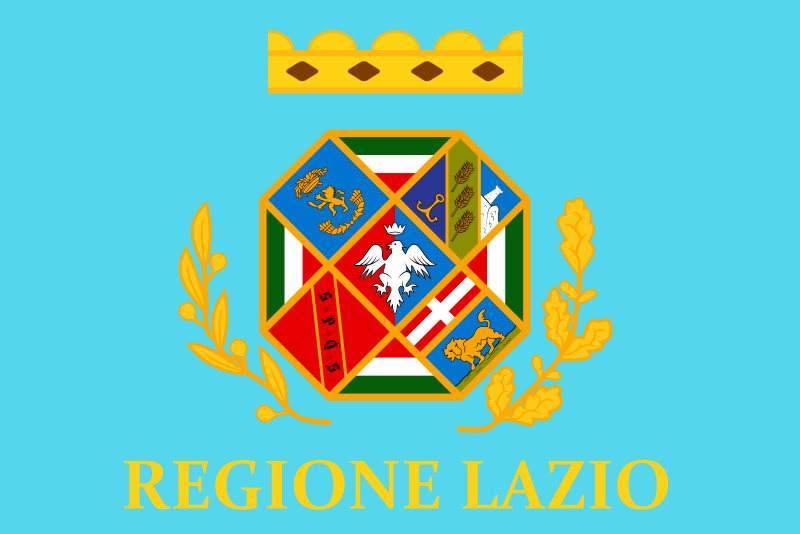 Lazio
Lazio
 Rom
Rom
 Olympic Summer Games
Olympic Summer Games
 1960 Summer Olympics
1960 Summer Olympics
 Silk road
Silk road

 Cities founded by the Romans
Cities founded by the Romans

 World Heritage
World Heritage

罗马(意大利语:Roma)是意大利首都及全国政治、经济、文化和交通中心,是世界著名的历史文化名城,古罗马文明的发祥地,因建城历史悠久并保存大量古迹而被昵称为“永恒之城”[1][2]。其位于意大利半岛中西部,台伯河下游平原地的七座小山丘上,市中心面积有1200多平方公里。罗马同时是全世界天主教会的中枢,拥有700多座教堂与修道院、7所天主教大学,市内的梵蒂冈城是罗马主教即天主教会教宗及圣座的驻地。罗马与佛罗伦萨同为意大利文艺复兴中心[3],现今仍保存有相当丰富的文艺复兴与巴洛克风貌;1980年,罗马的历史城区被列为世界文化遗产[4]。
Rom (lateinisch Rōma; italienisch Roma [ˈroːma]), amtlich Roma Capitale, ist die Hauptstadt Italiens.[2] Mit etwa drei Millionen Einwohnern im Stadtgebiet bzw. rund vier Millionen Einwohnern in der Agglomeration ist sie die größte Stadt Italiens. Rom liegt in der Region Latium an den Ufern des Flusses Tiber.
Rom wurde erstmals im 1. Jahrhundert v. Chr. vom Dichter Tibull[3] Ewige Stadt genannt. Diese Bezeichnung, ursprünglich eine Antonomasie, wurde zu einem Ehrennamen für die Stadt wegen der Bedeutung in ihrer bis heute drei Jahrtausende umspannenden Geschichte.
Sie ist heute Verwaltungssitz der Region Latium und der Metropolitanstadt Rom, bis 2015 Provinz Rom. Innerhalb der Stadt bildet der unabhängige Staat der Vatikanstadt eine Enklave. Der Vatikan ist der Sitz des Papstes, das heißt des Bischofs von Rom und Oberhaupts der römisch-katholischen Kirche sowie des Heiligen Stuhls. Zudem ist Rom seit 1834 Sitz des Malteser-Ritterordens, der ein eigenständiges (jedoch nichtstaatliches) Völkerrechtssubjekt ist, sowie der UNO-Unterorganisationen FAO, IFAD und WFP.
Rom ist außerordentlich reich an bedeutenden Bauten und Museen und Ziel zahlreicher Touristen. Die Altstadt von Rom, der Petersdom und die Vatikanstadt wurden von der UNESCO im Jahr 1980 zum Weltkulturerbe erklärt.[4]
In einer Rangliste der Städte nach ihrer Lebensqualität belegte Rom im Jahre 2018 den 57. Platz unter 231 untersuchten Städten weltweit.[5]
ローマ(伊: Roma、羅: Roma)は、イタリアの首都。欧州有数の世界都市であり、ラツィオ州の州都、ローマ県のコムーネの一つで、ローマ県の県都でもある。英語とフランス語の表記は「Rome」。
イタリアの首都で政治、経済、文化の中心地である。当市に囲まれるようにローマ教皇の居住するバチカン市国があり、そこは全世界のカトリック教徒にとっての中心地で、現在は外国であるが歴史・宗教・文化的にはローマ市地域と密接な関わりがある。そして昔のローマの大国さを表した「ローマは一日にして成らず」という諺もある。また、領土を持たないマルタ騎士団の本部、マルタ宮殿がコンドッティ通り68にあり、治外法権が認められている。
2014年現在の人口は約286万人で、イタリアで最も人口が多い都市である。2010年の都市的地域の人口では271万人であり、世界128位である[4]。 かつてのローマ帝国の首都であったため西洋文明圏を代表する都市のひとつであり、カトリック教会の中枢であり、そしてまたその美しさから『永遠の都』と称される。
2014年、アメリカのシンクタンクが公表したビジネス、人材、文化、政治などを対象とした総合的な世界都市ランキングにおいて、世界第32位の都市と評価されており、イタリアの都市では第1位であった[5]。
観光都市としての側面もあり、2012年には7,800,000人の観光客が訪れた[6]。後述の「観光」、「聖地として」も参照。
Rome (Italian: Roma ![]() i[ˈroːma]; Latin: Roma [ˈroːma]) is the capital city of Italy and a special comune (named Comune di Roma Capitale). Rome also serves as the capital of the Lazio region. With 2,872,800 residents in 1,285 km2 (496.1 sq mi),[1] it is also the country's most populated comune. It is the fourth-most populous city in the European Union by population within city limits. It is the centre of the Metropolitan City of Rome, which has a population of 4.3 million residents.[2] Rome is located in the central-western portion of the Italian Peninsula, within Lazio (Latium), along the shores of the Tiber. The Vatican City is an independent country inside the city boundaries of Rome, the only existing example of a country within a city: for this reason Rome has been often defined as capital of two states.[3][4]
i[ˈroːma]; Latin: Roma [ˈroːma]) is the capital city of Italy and a special comune (named Comune di Roma Capitale). Rome also serves as the capital of the Lazio region. With 2,872,800 residents in 1,285 km2 (496.1 sq mi),[1] it is also the country's most populated comune. It is the fourth-most populous city in the European Union by population within city limits. It is the centre of the Metropolitan City of Rome, which has a population of 4.3 million residents.[2] Rome is located in the central-western portion of the Italian Peninsula, within Lazio (Latium), along the shores of the Tiber. The Vatican City is an independent country inside the city boundaries of Rome, the only existing example of a country within a city: for this reason Rome has been often defined as capital of two states.[3][4]
Rome's history spans 28 centuries. While Roman mythology dates the founding of Rome at around 753 BC, the site has been inhabited for much longer, making it one of the oldest continuously occupied sites in Europe.[5] The city's early population originated from a mix of Latins, Etruscans, and Sabines. Eventually, the city successively became the capital of the Roman Kingdom, the Roman Republic and the Roman Empire, and is regarded as the birthplace of Western civilisation and by some as the first ever metropolis.[6] It was first called The Eternal City (Latin: Urbs Aeterna; Italian: La Città Eterna) by the Roman poet Tibullus in the 1st century BC, and the expression was also taken up by Ovid, Virgil, and Livy.[7][8] Rome is also called the "Caput Mundi" (Capital of the World). After the fall of the Western Empire, which marked the beginning of the Middle Ages, Rome slowly fell under the political control of the Papacy, which had settled in the city since the 1st century AD, until in the 8th century it became the capital of the Papal States, which lasted until 1870. Beginning with the Renaissance, almost all the popes since Nicholas V (1447–1455) pursued over four hundred years a coherent architectural and urban programme aimed at making the city the artistic and cultural centre of the world.[9] In this way, Rome became first one of the major centres of the Italian Renaissance,[10] and then the birthplace of both the Baroque style and Neoclassicism. Famous artists, painters, sculptors and architects made Rome the centre of their activity, creating masterpieces throughout the city. In 1871, Rome became the capital of the Kingdom of Italy, which, in 1946, became the Italian Republic.
Rome has the status of a global city.[11][12][13] In 2016, Rome ranked as the 14th-most-visited city in the world, 3rd most visited in the European Union, and the most popular tourist attraction in Italy.[14] Its historic centre is listed by UNESCO as a World Heritage Site.[15] Monuments and museums such as the Vatican Museums and the Colosseum are among the world's most visited tourist destinations with both locations receiving millions of tourists a year, and the city hosted the 1960 Summer Olympics. Rome is the seat of several specialized agencies of the United Nations, such as the Food and Agriculture Organization (FAO), the World Food Programme (WFP) and the International Fund for Agricultural Development (IFAD). The city hosts the headquarters of many international business companies, such as Eni, Enel, TIM, Leonardo S.p.A., and national and international banks such as Unicredit and BNL. Its business district, called EUR, is the base of many companies involved in the oil industry, the pharmaceutical industry, and financial services. Rome is also an important fashion and design centre thanks to renowned international brands centered in the city. Rome's Cinecittà Studios have been the set of many Academy Award–winning movies.
Roma (AFI: /ˈroma/[5], ) è la capitale della Repubblica Italiana, nonché capoluogo dell'omonima città metropolitana e della regione Lazio. La città è dotata di un ordinamento amministrativo speciale, denominato Roma Capitale, disciplinato da una legge dello Stato.[6]
Con 2 869 322 abitanti è il comune più popoloso d'Italia e il quarto dell'Unione europea,[3] mentre con 1 287,36 km² è il comune più esteso d'Italia e la quinta città più estesa d'Europa dopo Mosca, Istanbul, Londra e San Pietroburgo. È inoltre la città europea con la maggiore superficie di aree verdi[7].
Fondata secondo la tradizione il 21 aprile del 753 a.C. (sebbene scavi recenti nel Lapis Niger farebbero risalire la fondazione a 2 secoli prima[8][9]), nel corso dei suoi tre millenni di storia è stata la prima metropoli dell'umanità,[10] cuore pulsante di una delle più importanti civiltà antiche, che influenzò la società, la cultura, la lingua, la letteratura, l'arte, l'architettura, la filosofia, la religione, il diritto e i costumi dei secoli successivi. Luogo di origine della lingua latina, fu capitale dell'Impero romano che estendeva il suo dominio su tutto il bacino del Mediterraneo e gran parte dell'Europa, dello Stato Pontificio, sottoposto al potere temporale dei papi e del Regno d'Italia (dal 1871 al 1946). Per antonomasia, è definita l'Urbe, Caput Mundi e Città eterna.
Il suo centro storico, delimitato dal perimetro delle mura aureliane, sovrapposizione di testimonianze di quasi tre millenni è espressione del patrimonio storico, artistico e culturale del mondo occidentale europeo[11] e, nel 1980, insieme alle proprietà extraterritoriali della Santa Sede nella città, è stato inserito nella lista dei Patrimoni dell'umanità dell'UNESCO, provvedimento esteso nel 1990 ai territori compresi all'interno delle mura gianicolensi, edificate per volere di papa Urbano VIII.[12][13]
Roma, cuore della cristianità cattolica, è l'unica città al mondo ad ospitare al proprio interno un intero Stato, l'enclave della Città del Vaticano:[14] per tale motivo è spesso definita capitale di due Stati.[15][16]
Rome (en italien : Roma, prononcé [ˈroˑma]) est la capitale de l'Italie depuis 1871. Située au centre-ouest de la péninsule Italienne, près de la mer Tyrrhénienne, elle est également la capitale de la région du Latium, et fut celle de l'Empire romain durant 357 ans. En 2016, elle compte 2 877 215 habitants établis sur 1 285 km2, ce qui fait d'elle la commune la plus peuplée d'Italie et la troisième plus étendue d'Europe après Moscou et Londres1. Son aire urbaine recense 4 356 403 habitants en 20162,3. Elle présente en outre la particularité de contenir un État enclavé dans son territoire : la cité-État du Vatican (Stato della Città del Vaticano), dont le pape est le souverain. C'est le seul exemple existant d'un État à l'intérieur d'une ville.
L'histoire de Rome s'étend sur plus de vingt-huit siècles, depuis sa fondation mythique par Romulus en 753 av. J.-C. jusqu'à son rôle actuel de capitale de la république italienne. Second berceau de la civilisation occidentale après Athènes, la ville fut successivement le centre de la monarchie romaine, de la république romaine (509 av. J.-C. – 27 av. J.-C.), puis de l'Empire romain (27 av. J.-C. – 330). Durant cette période, où nait la célèbre expression proverbiale « tous les chemins mènent à Rome », la ville aurait compté entre un et deux millions d'habitants et domine l'Europe, l'Afrique du Nord et le Moyen-Orient tant militairement que culturellement, diffusant dans ces territoires la langue latine, ses arts et techniques ainsi que la religion chrétienne. Depuis le Ier siècle elle abrite le siège de l'Église catholique romaine, au sein des États pontificaux (752-1870) puis de la Cité du Vatican.
Considérablement agrandie par de grands travaux sous Jules César et surtout sous Auguste, la ville est partiellement détruite lors du Grand incendie de Rome - le Circus Maximus notamment. À partir du XVe siècle, presque tous les papes depuis Nicolas V (1447-1455) perpétuent la tradition de l'architecture romaine et ambitionnent de faire de Rome le principal centre culturel et artistique de l'Occident. La ville devient l'un des foyers de la Renaissance italienne, avec Florence et Venise, et donne naissance au style baroque - dont témoigne encore son centre historique, classé par l'UNESCO comme site du patrimoine mondial4. Des artistes comme Michel-Ange, Raphaël ou Le Bernin s'y installent et produisent des œuvres telles que la basilique Saint-Pierre, la chapelle Sixtine, la fontaine de Trevi, le Capitole ou les Chambres de Raphaël. Au XIXe siècle, Rome est le symbole de l'unité italienne et devient la capitale du Royaume d'Italie, puis de la République après la Seconde Guerre mondiale.
Ville globale, Rome est la troisième destination touristique la plus visitée d'Europe derrière Londres et Paris5. La Ville Éternelle est l'une des plus belles villes du monde, et fréquentée par les touristes depuis le XVIIIe siècle. Le siège de la papauté et le pèlerinage de Rome en font un lieu éminent pour les chrétiens du monde entier depuis des siècles. Les musées du Vatican et le Colisée sont parmi les sites les plus fréquentés. Rome est aussi l'un des plus grands sites archéologiques du monde, et compte également de nombreux ponts et fontaines, 900 églises, ainsi qu'un grand nombre de musées et d'universités. Outre le tourisme, l'économie de la « Ville Éternelle » est également orientée vers les nouvelles technologies, les médias et les télécommunications depuis les années 2000. Bâtie sur sept collines, la ville se situe près de l'embouchure du Tibre et est divisée en vingt-deux rioni. Rome a aussi organisé les Jeux olympiques d'été en 1960. Rome n'est jumelée qu'avec une seule autre ville, Paris, ce qui est vrai dans l'autre sens, avec ce slogan : « Seul Paris est digne de Rome, seule Rome est digne de Paris ».
Roma es una ciudad italiana de 2 877 215 habitantes,23 capital de la región del Lacio y de Italia. Es el municipio más poblado de Italia y es la cuarta ciudad más poblada de la Unión Europea.4 Por antonomasia se la conoce desde fines de la Antigüedad como la Urbe. También es llamada "La Ciudad Eterna" (en italiano: Città Eterna).
En el transcurso de su historia, que abarca tres milenios, llegó a extender sus dominios sobre toda la cuenca del Mediterráneo y gran parte de Europa. Como capital del Imperio romano, se constituyó en una de las primeras grandes metrópolis de la humanidad, centro de una de las civilizaciones antiguas más importantes. Influyó en la sociedad, la cultura, la lengua, la literatura, el arte, la arquitectura, la filosofía, la religión, el derecho y la moral de los siglos sucesivos.
Es la ciudad con la más alta concentración de bienes históricos y arquitectónicos del mundo;5 su centro histórico delimitado por el perímetro que marcan las murallas aurelianas, superposición de huellas de tres milenios, es la expresión del patrimonio histórico, artístico y cultural del mundo occidental europeo.6 En 1980, junto a las propiedades extraterritoriales de la Santa Sede que se encuentran en la ciudad y la Basílica de San Pablo Extramuros, fue incluida en la lista del Patrimonio de la Humanidad de la Unesco.78
Roma es el corazón geográfico de la religión católica y destino de peregrinación (vías romeas) y también la única ciudad del mundo que tiene en su interior un Estado extranjero: el enclave de la Ciudad del Vaticano, que se encuentra bajo el poder temporal del papa.9 Por tal motivo se le ha conocido también como la capital de dos Estados.
Рим (итал. Roma [ˈroːma]) — столица и крупнейший город Италии. Административный центр области Лацио и провинции Рим. Расположен на реке Тибр.
Рим — один из старейших городов мира, древняя столица Римской империи. Ещё в Античности (III век н. э.) Рим стали часто называть Вечным (лат. Roma Aeterna). Одним из первых так назвал Рим римский поэт Альбий Тибулл (I век до н. э.) в своей второй элегии. Представления о «вечности» Рима во многом сохранились и после падения древнеримской цивилизации, принеся соответствующий эпитет в современные языки.
Также Рим называют «городом на семи холмах». Первоначально поселения располагались на холме Палатине, впоследствии были заселены соседние холмы: Капитолий и Квиринал. Несколько позже поселения появились на последних четырёх холмах (Целие, Авентине, Эсквилине и Виминале).

 Medieval cities in Europe
Medieval cities in Europe
 Austria
Austria

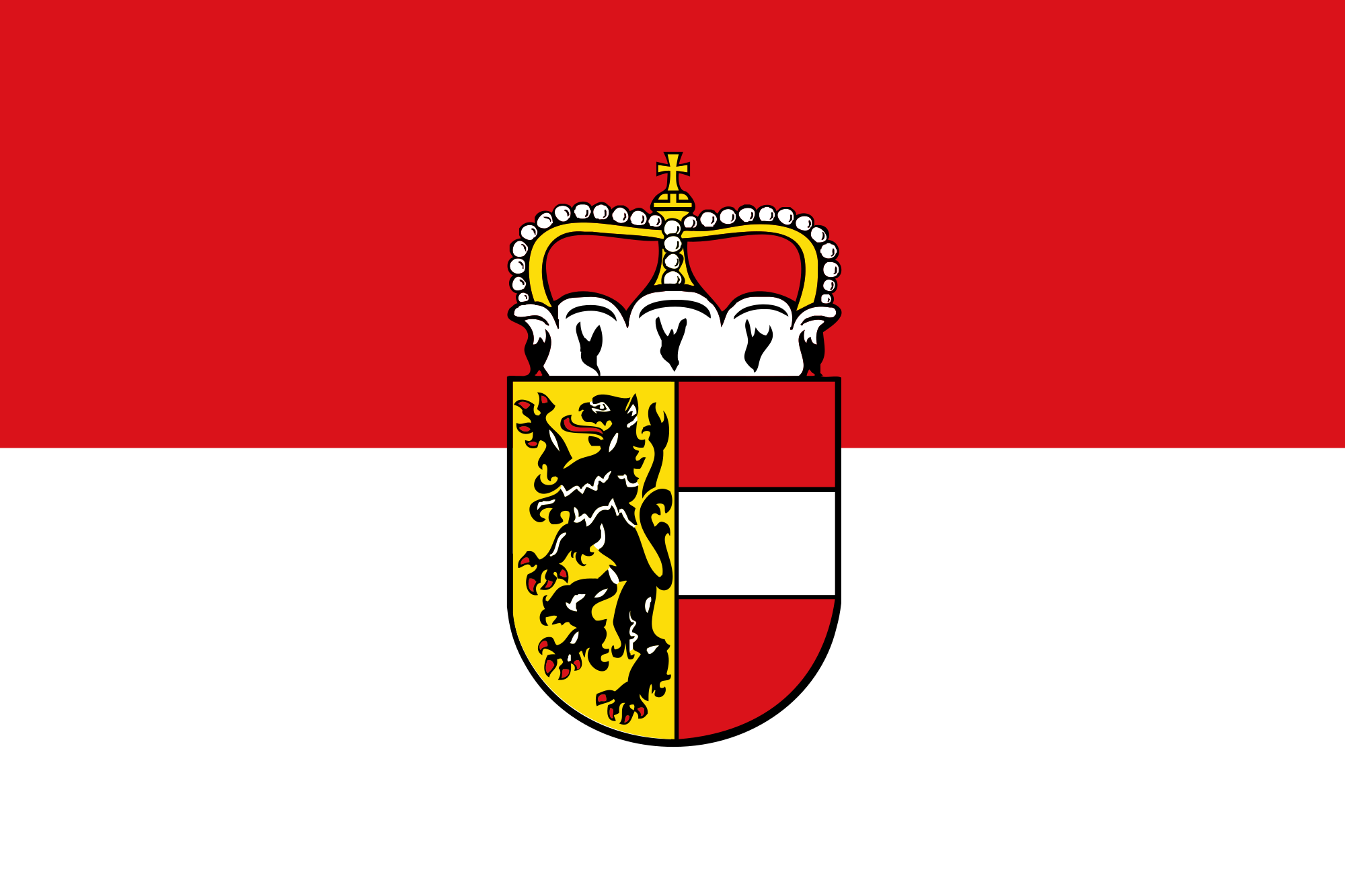 Salzburg
Salzburg

 Vacation and Travel
Vacation and Travel

 Cities founded by the Romans
Cities founded by the Romans

 World Heritage
World Heritage
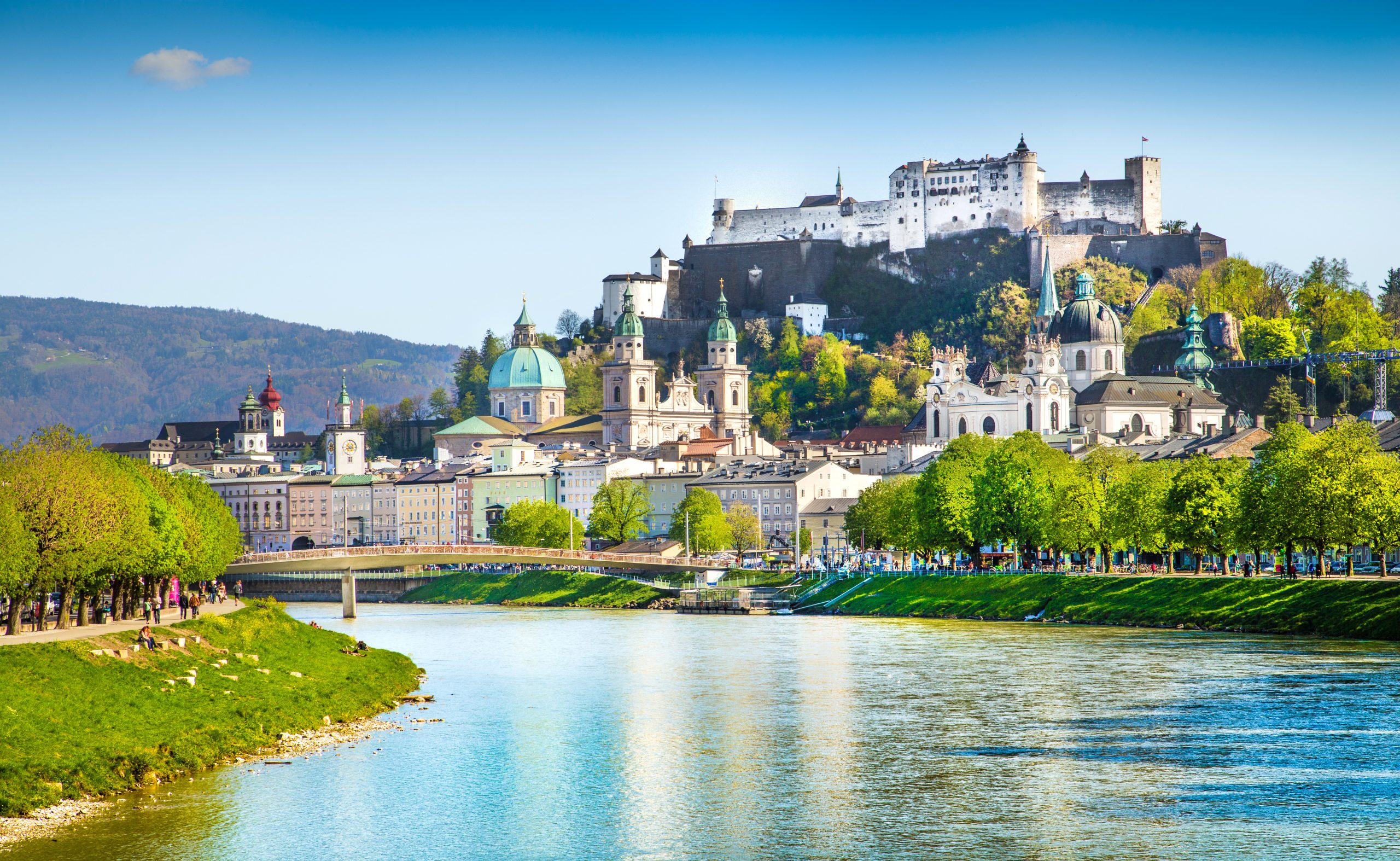


位于阿尔卑斯山北麓的萨尔茨堡市地处奥地利的中心,是与其同名的萨尔茨堡州的首府。萨尔茨堡音乐节创始人之一,奥地利诗人雨果·冯·霍夫曼斯塔尔 (Hugo von Hofmannsthal)称之为“欧洲中心的心脏”。由于其得天独厚的地理位置,萨尔茨堡是古欧洲商旅交通的枢纽。现在无论是火车,汽车还是来自西面八 方的飞机都能轻松抵达。
萨尔茨堡老城无与伦比的魅力,市郊美丽的湖光山色以及莫扎特于1756年在萨尔茨堡的诞生令萨尔茨堡蜚声世界。作为举世闻名的夏季艺术节的举办城市,萨尔 茨堡每年都成为世界的文化中心。自1997年始,联合国教科文组织把整个萨尔茨堡老城作为具有重要保护价值的景观纳入世界文化遗产之列,对于萨尔茨堡来说 这是荣誉也是责任。最后不得不提的是在萨尔茨堡拍摄的好莱坞电影“音乐之声”(讲述萨尔茨堡的特拉普上校一家的故事,即“特拉普家庭合唱团”如何由美国风 靡至全世界。)。该电影获得了5项奥斯卡金奖,是电影史上最成功的电影之一,至今它仍吸引着成千上万的游客从世界各地来到萨尔茨堡。 萨尔茨堡每年均举办约4000多项顶级文化活动。从一月份的莫扎特音乐周,复活节音乐节到圣灵降临节音乐会,夏季艺术节到十月份的萨尔茨堡文化日,爵士之 秋音乐节, 再加上基督降临节、圣诞节以及新年期间许多节日氛围满溢的活动,真可谓好戏连台。室内音乐周,木偶剧团表演的莫扎特歌剧,宫殿、城堡音乐会,管弦乐、独奏 音乐会,联邦剧院的表演,博物馆和画廊的展览,摇滚、流行音乐会以及“萨尔茨堡舞台”举办的活动,都给城市的文化生活不断增添新的活力。
萨尔茨堡(德语:Salzburg),奥地利共和国萨尔茨堡州的首府,人口为153,377(2018年1月1日),是继维也纳、格拉茨和林茨之后的奥地利第四大城市。萨尔茨堡位于奥地利的西部,是阿尔卑斯山脉的门庭,城市的建筑风格以巴洛克为主,城市的历史相当悠久,据史料记载,萨尔茨堡是现今奥地利管辖地域内历史最悠久的城市。
萨尔茨堡是音乐天才莫扎特的出生地,莫扎特不到36年的短暂生命中超过一半的岁月是在萨尔茨堡度过的。萨尔茨堡也是指挥家赫伯特·冯·卡拉扬的故乡,电影《音乐之声》的拍摄地。萨尔茨堡老城在1996年被联合国教科文组织列入世界遗产名录。
Salzburg (bairisch-österreichisch Soizbuag ausgesprochen) ist die Landeshauptstadt des gleichnamigen Landes der Republik Österreich. Mit 154.211 Einwohnern (Stand 1. Jänner 2019)[2] ist sie nach Wien, Graz und Linz die viertgrößte Stadt Österreichs. Sie liegt im Salzburger Becken. Prägend für die Stadt sind die Stadtberge, die durch das Stadtgebiet fließende Salzach und die von weitem sichtbare Festung Hohensalzburg. Der Nordwesten der Statutarstadt Salzburg grenzt an Freilassing in Deutschland (Freistaat Bayern, Landkreis Berchtesgadener Land), das übrige Stadtgebiet an den Bezirk Salzburg-Umgebung, landläufig Flachgau genannt.
Im Jahr 488 begann am selben Ort der Niedergang der römischen Stadt Iuvavum. Salzburg wurde 696 als Bischofssitz neu gegründet und 798 zum Sitz des Erzbischofs. Die Haupteinnahmequellen Salzburgs bildeten Salzgewinnung und -handel sowie zeitweise der Goldbergbau. Die Festung Hohensalzburg stammt im Kern aus dem 11. Jahrhundert. Sie ist eine der größten mittelalterlichen Burganlagen in Europa und ein Wahrzeichen der Stadt. Ab dem 17. Jahrhundert wurde die Stadt von Erzbischof Wolf Dietrich und dessen Nachfolgern als Residenzstadt prunkvoll ausgestattet. Zu dieser Zeit wurde im Süden der Stadt auch das Schloss Hellbrunn samt Schlosspark, Wasserspielen und Alleen errichtet. Als bekanntester Salzburger gilt der 1756 hier geborene Komponist Wolfgang Amadeus Mozart, weshalb die Stadt den Beinamen „Mozartstadt“ und der Flughafen den Namen Salzburg Airport W. A. Mozart trägt. Das historische Zentrum der Stadt steht seit 1996 auf der Liste des Weltkulturerbes der UNESCO.
Heute ist Salzburg ein bedeutender Messe- und Kongressstandort mit vielen Handels- und Dienstleistungsbetrieben sowie einem leistungsfähigen Tourismusbereich. Daneben ist die Stadt durch die Salzburger Festspiele international bedeutsam, was ihr den weiteren Beinamen „Festspielstadt“ einbrachte. Die Stadt Salzburg bildet auf Grund ihrer verkehrsgünstigen Lage den Kern der grenzüberschreitenden EuRegio Salzburg – Berchtesgadener Land – Traunstein. Zudem ist sie Verkehrsknotenpunkt für je eine der wichtigsten West–Ost- sowie transalpinen Straßen- und Schienenrouten Europas (München – Wien – Budapest, Salzburg – Villach – Udine).
ザルツブルク(ドイツ語: Salzburg[1])は、オーストリア中北部の都市で、同名のザルツブルク州の州都である。ドイツ語で特に区別して表記する場合、ザルツブルク市はStadt Salzburg、州はLand Salzburgとする。郡に属さない憲章都市(Statutarstadt)であるが、ザルツブルク=ウムゲーブング郡 の郡庁が置かれている。
ザルツブルクは、標高424メートルに位置し、15万人の人口を擁する。すぐ南西側ではドイツ領土のベルヒテスガーデンに接し、高速道路で西に140キロの位置にミュンヘン、東300キロに首都ウィーンという位置関係や、オーストリア支配下に入ったのは19世紀以降(それまでは大司教が支配するドイツ諸邦のひとつとして、形骸化した神聖ローマ帝位を度外視すればオーストリアとは対等独立の関係だった)で、その直前には短期間バイエルン王国に併合されていたという歴史的経緯から、ウィーンにも増して、ドイツのバイエルン州との文化的関係が深い。
ザルツブルクは、モーツァルトが1756年に誕生してから25歳まで住んでいた事で、彼の音楽を愛する世界の人々にとっていわば巡礼地になっている。とりわけザルツブルク音楽祭の開催される夏のシーズンはホテルはどこも満員となり、モーツァルトの生家のあるゲトライデ通りはもともと狭いがなおさら狭く感じられるほどの混雑となる。 当地の空港も、「ザルツブルク・ヴォルフガング・アマデウス・モーツァルト空港」と名付けられている。
Salzburg (Austrian: [ˈsaltsbʊʁk]; German: [ˈzaltsbʊʁk] ( listen); [note 1] literally "Salt Fortress"; Austro-Bavarian: Soizburg) is the capital city of the State of Salzburg and with 154,211[7] inhabitants, it is the fourth-largest city in Austria.
listen); [note 1] literally "Salt Fortress"; Austro-Bavarian: Soizburg) is the capital city of the State of Salzburg and with 154,211[7] inhabitants, it is the fourth-largest city in Austria.
The town is located on the site of the former Roman settlement of Iuvavum. Salzburg was founded as an episcopal see in 696 and became a seat of the archbishop in 798. Its main sources of income were salt extraction and trade and, at times, gold mining. The fortress of Hohensalzburg, one of the largest medieval fortresses in Europe, dates from the 11th century. In the 17th century, Salzburg became a centre of the Counter-Reformation, where monasteries and numerous Baroque churches were built.
Salzburg's historic centre (German: Altstadt) is thus renowned for its Baroque architecture and is one of the best-preserved city centres north of the Alps, with 27 churches. It was listed as a UNESCO World Heritage Site in 1996. The city has three universities and a large population of students. Tourists also visit Salzburg to tour the historic centre and the scenic Alpine surroundings. Salzburg was the birthplace of the 18th-century composer Wolfgang Amadeus Mozart. Because of its history, culture, and attractions, Salzburg has been labeled Austria's "most inspiring city."[8]
Salzbourg (prononcé, en français, [sals.buʁ] ; en allemand Salzburg [ˈzalt͡sbʊɐ̯k] Écouter ; en bavarois Soizburg ; littéralement « château du sel ») est une ville autrichienne de 154 211 habitants en 20191 et la capitale du Land de Salzbourg (520 000 habitants en 2003). La vieille ville est inscrite sur la liste du patrimoine mondial de l'UNESCO. C'est la quatrième ville la plus peuplée de son pays avec ses 148 521 habitants en 2012.
Située à la frontière allemande, la ville est célèbre pour avoir vu naître Mozart. Elle tient son nom du sel (Salz en allemand) et de château (Burg), sur le commerce duquel la cité bâtit sa fortune. Le festival de musique classique de Salzbourg est l'un des plus prestigieux au monde.
Salisburgo (in tedesco Salzburg, pronunciato [ˈzaltsbʊʁrk] ascolta[?·info], in austro-bavarese Soizburg) è una città di 154 211 abitanti (2019)[1] dell'Austria centro-settentrionale circa 300 km ad ovest di Vienna.
È una città conosciuta nel mondo per la sua architettura barocca italianeggiante, per il suo rapporto con la musica – diede i natali a Wolfgang Amadeus Mozart ed è ancora oggi sede di grandi manifestazioni musicali – e con le Alpi.
Salisburgo è Patrimonio dell'umanità dell'UNESCO.
È inoltre un centro industriale con, principalmente, industrie alimentari, chimiche e tessili. La città riscosse inoltre molta popolarità quando nel 1964 fu girato il musical Tutti insieme appassionatamente con protagonisti Julie Andrews e Christopher Plummer; nel quale risaltano le piazze del centro storico ed il paesaggio alpino circostante.
Salzburgo (en alemán: Salzburg  /ˈzalt͡sbʊɐ̯k/ (?·i), 'ciudad/castillo [de la] sal') es la cuarta ciudad más poblada de Austria, con 154 211 habitantes (2019)3, capital del estado federado (Bundesland) de Salzburgo y de la región homónima, una de las nueve en que se divide este país. Está cerca de la frontera nacional con Alemania. Su nombre proviene de la sal (salz en alemán) de la que se encuentran importantes minas en las cercanías y con cuyo comercio la ciudad se desarrolló a lo largo de varios siglos.4 En el siglo VIII d. C, particularmente, alcanzó un alto grado de prosperidad por tal comercio y por los impuestos que se cobraban al paso de las barcazas que transportaban la sal y otras mercancías por el río Salzach que atraviesa la ciudad.
/ˈzalt͡sbʊɐ̯k/ (?·i), 'ciudad/castillo [de la] sal') es la cuarta ciudad más poblada de Austria, con 154 211 habitantes (2019)3, capital del estado federado (Bundesland) de Salzburgo y de la región homónima, una de las nueve en que se divide este país. Está cerca de la frontera nacional con Alemania. Su nombre proviene de la sal (salz en alemán) de la que se encuentran importantes minas en las cercanías y con cuyo comercio la ciudad se desarrolló a lo largo de varios siglos.4 En el siglo VIII d. C, particularmente, alcanzó un alto grado de prosperidad por tal comercio y por los impuestos que se cobraban al paso de las barcazas que transportaban la sal y otras mercancías por el río Salzach que atraviesa la ciudad.
La ciudad es conocida por ser la ciudad natal de Wolfgang Amadeus Mozart y por los festivales musicales que se celebran cada verano en la localidad.5 Además, el centro antiguo de la ciudad fue declarado por la Unesco como Patrimonio Cultural de la Humanidad.6
Salzburgo es la “puerta de entrada” al noroeste de Austria y constituye un importante cruce de carreteras y ferrocarriles. También es uno de los principales centros turísticos del país y un centro internacional de conferencias.7
За́льцбург (нем. Salzburg [ˈzalt͡sbʊɐ̯k]  слушать, бав. Soizburg — Соляная крепость) — город в западной Австрии, столица федеральной земли Зальцбург. Четвёртый по величине город Австрии после Вены, Граца и Линца.
слушать, бав. Soizburg — Соляная крепость) — город в западной Австрии, столица федеральной земли Зальцбург. Четвёртый по величине город Австрии после Вены, Граца и Линца.
Центральная историческая часть Зальцбурга внесена в список Всемирного наследия ЮНЕСКО.

施派尔[2](德语:Speyer,德语发音:[ˈʃpaɪ̯ɐ] (ⓘ))是位于德国莱茵兰-普法尔茨州莱茵河畔的一座非县辖城市,总面积42.71平方千米,截至2022年12月31日总人口为51,368人。
施派尔拥有许多保存良好的古老建筑,例如被联合国教育科学文化组织(UNESCO)评定为世界文化遗产的施派尔主教座堂(Der Dom Zu Speyer)、纪念抗议宗在议会中争取改革的纪念教堂(Gedächtniskirche)、莱茵流域唯一后洛可可风格的三位一体教堂(Dreifaltigkeitkirche)、以及德国境内最高耸和最重要的护城门。
施派尔(Speyer)是位于德国莱茵兰-普法尔茨州莱茵河畔的一座城市。
1529年4月19日神圣罗马帝国在此召开帝国会议,讨论解冻迫害新教徒的《沃木斯议会》议案,遭到部分与会的诸侯和自由城市代表的反对,史称“抗议者”(德语:Protestanten),即新教徒的代名词。
约在五千年前,施派尔即拥有着第一批原始住民在这块土地上活动。接着自从凯撒争夺下高卢地区以后,莱因河成了迅速扩展的罗马帝国一道保护疆界,而刚好位于莱因河东方的施派尔,也成了罗马士兵驻军的一大据点。在主后一百五十年,施派尔以“NOVIOMAGUS”的名称出现在希腊人托勒密(Ptolemaios)的世界地图中。直到主后346年以后,才以施派尔这个名称纳入主教区中。
十六世纪中期,施派尔成为德国历史的转捩点,自从路德于主后1521年站上沃木斯帝国会议,和皇帝卡尔五世以及教廷答辩以降,就在欧洲大陆掀起了一股宗教改革的风潮,而主后1526年,帝国会议举办在施派尔主教座堂,也使施派尔瞬间涌进了大批的皇亲贵族。历经了1526年的帝国会议,在1529年帝国会议再一次于施派尔举行,并且至此时奠定了抗议宗教会(Protestation)的基础。
施派尔拥有许多保存良好的古老建筑,例如被联合国教育科学文化组织(ENESCO)评定为世界文化遗产的施派尔主教座堂(Der Dom Zu Speyer)、纪念抗议宗在议会中争取改革的纪念教堂(Gedächtniskirche)、莱因流域唯一后洛可可风格的三位一体教堂(Dreifaltigkeitkirche)、以及德国境内最高耸和最重要的护城门。
Speyer (bis 1825 auch Speier[2]) ist eine kreisfreie Universitätsstadt in Rheinland-Pfalz und Teil der Metropolregion Rhein-Neckar. Als römische Gründung, damals Noviomagus oder Civitas Nemetum (Hauptstadt des Stammes der Nemeter) genannt, ist sie eine der ältesten Städte Deutschlands und wurde als Spira um 600 Zentrum des Speyergaues. Im Mittelalter war Speyer als freie Reichsstadt eine der bedeutendsten Städte des Heiligen Römischen Reiches Deutscher Nation. Von 1816 bis 1945 war sie Sitz der bayerischen Verwaltung der Pfalz. Heute gehört Speyer zu Rheinland-Pfalz und hat 51.368 Einwohner (Stand 2022).
Weithin bekannt ist die heutige Mittelstadt durch ihren Kaiser- und Mariendom, der zugleich Kathedrale des römisch-katholischen Bistums Speyer ist. Er ist die weltweit größte noch erhaltene romanische Kirche und zählt seit 1981 zum UNESCO-Welterbe. Die jüdischen Stätten Speyers, zusammen mit denen der anderen beiden SchUM-Städte Mainz und Worms, sind 2021 ebenfalls UNESCO-Weltkulturerbe geworden.
Speyer (German pronunciation: [ˈʃpaɪ̯ɐ], older spelling Speier, known as Spire in French and formerly as Spires in English) is a town in Rhineland-Palatinate, Germany, with approximately 50,000 inhabitants. Located beside the river Rhine, Speyer is 25 km (16 miles) south of Ludwigshafen and Mannheim. Founded by the Romans, it is one of Germany's oldest cities. Speyer is dominated by the Speyer Cathedral, a number of churches and the Altpörtel (old gate). In the cathedral, beneath the high altar, are the tombs of eight Holy Roman emperors and German kings.
The city is famous for the 1529 Protestation at Speyer.
Spire (Speyer en allemand) est une ville portuaire et un arrondissement du Sud du Land de Rhénanie-Palatinat. Elle compte 50 513 habitants au 30 juin 2006.
Le Conseil de l'Europe lui décerne le prix de l'Europe de 19991.
Spira[1] (in tedesco Speyer, in tedesco palatino Schbaija, in francese Spire) è una città extracircondariale (targa SP) di 49.811 abitanti della Renania-Palatinato, in Germania. Situata lungo il corso del Reno, si trova a circa 25 km a sud di Ludwigshafen e Mannheim.
Centro di grande importanza storica e culturale, la città è nota per l'imponente cattedrale, inserita dal 1981 nella lista dei patrimoni dell'umanità dell'UNESCO.
Espira (en alemán: Speyer) es una ciudad del estado federado alemán de Renania-Palatinado. Espira tiene aproximadamente 50 000 habitantes y está localizada a orillas del río Rin, 25 km al sur de Mannheim y 25 km al norte de Karlsruhe. Fue fundada por los romanos, lo que convierte a Espira en una de las ciudades más antiguas de Alemania. En la antigüedad, la zona se conocía como Noviomagus y Civitas Nemetum, de la tribu teutónica de los németes, que estaban asentados en la zona.
La ciudad está dominada por la Catedral de Espira, numerosas iglesias y la Puerta Vieja (Altportal). En la Catedral, detrás del altar mayor se sitúan las tumbas de ocho emperadores del Sacro Imperio Romano Germánico.
En 1999, la ciudad fue laureada con el Premio de Europa, una distinción otorgada anualmente por el Consejo de Europa, desde 1955, a aquellos municipios que hayan hecho notables esfuerzos para promover el ideal de la unidad europea.
Шпа́йер[2] (также Шпе́йер; нем. Speyer, пфальц. Schbaija) — город земельного подчинения в Германии, в земле Рейнланд-Пфальц.
Расположен на Рейне (регион Рейн-Неккар). Население — около 50 тысяч человек. Археологические данные позволяют предполагать, что город был населён кельтами 500 лет до н. э., сначала носил название Новиомаг (Noviomagus), позднее, в эпоху римлян, город был известен под именем Аугуста Неметум и Цивитас Неметум (город племени Неметер), по имени германского племени, населявшего эту область. В VI веке город получил имя Спира (Spira) от названия реки Шпайербах (Speyerbach), протекающей через город.


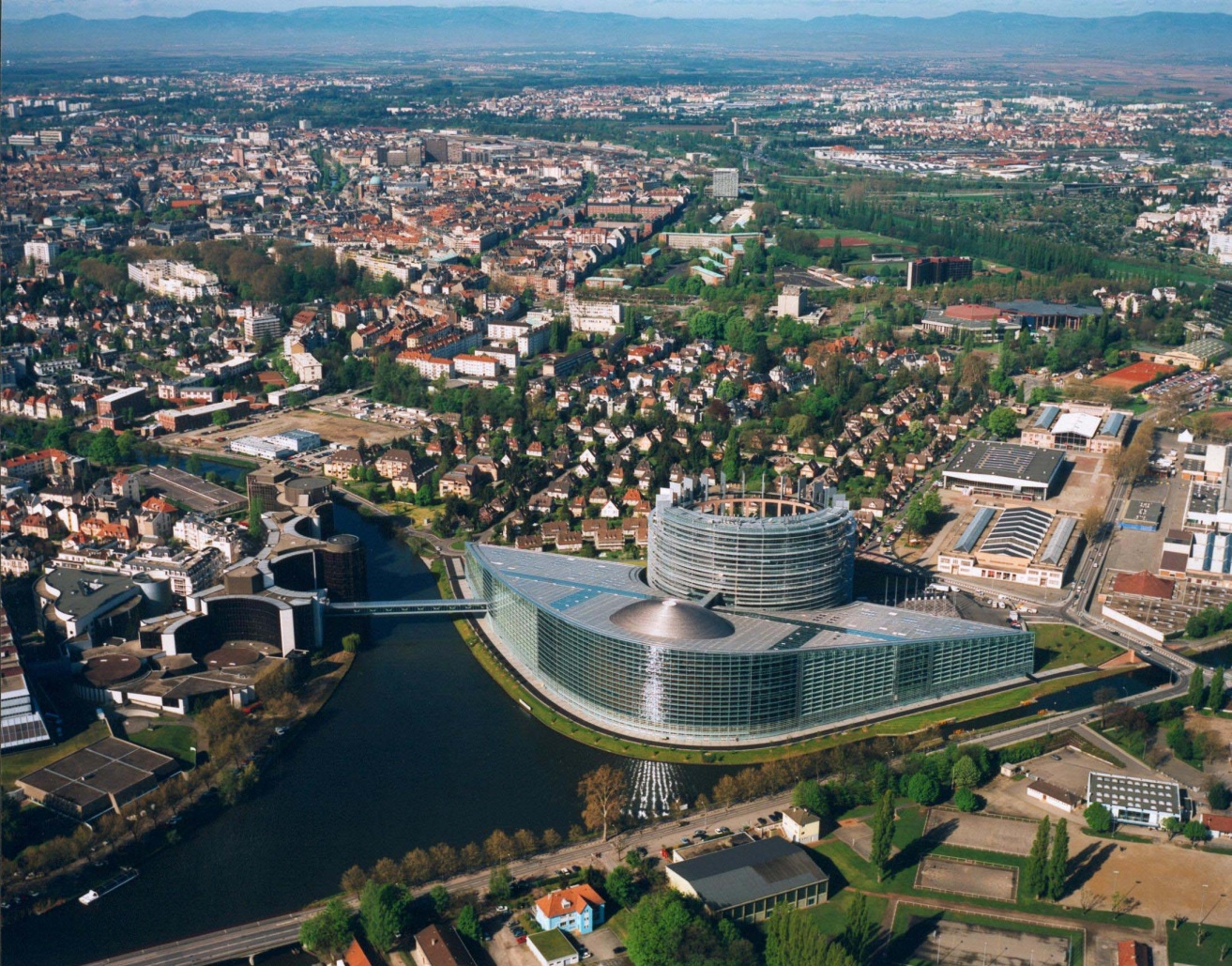
斯特拉斯堡 (Strasbourg),法国东北部城市,大东部大区(Région Grand Est)的首府和下莱茵省(Bas-Rhin,67省)的省会,也是法国第七大城市和最大的边境城市 ,又称白堡。市区位于莱茵河西岸,东侧与德国巴登-符腾堡州隔河相望,西侧则为孚日山区。斯特拉斯堡远离海岸线,但仍然受到北大西洋暖流的影响,属于非典型性的温带海洋性气候。历史上,斯特拉斯堡处于多个民族活动范围的重合地带。从最初的凯尔特,再到高卢、日耳曼以及后来的法兰克、查理曼,这些民族都在斯特拉斯堡留下了足迹。十九时期中期开始则逐渐成为了德法长期争夺的焦点。二战后,凭借得天独厚的地理优势,欧洲委员会、欧洲人权法院、欧洲反贪局及欧洲议会等多个欧盟合作组织均在斯特拉斯堡设立总部 。
斯特拉斯堡(法语:Strasbourg;德语:Straßburg[4],意为“街道城堡”)是法国大东部大区与下莱茵省的首府,位于法国国土的东端,与德国的巴登-符腾堡州隔莱茵河相望。全市人口约27万,城市圈人口则超过64万[5],是法国东北部人口最多的城市,按2010年人口也是法国人口第九多的城市。
斯特拉斯堡属于法国,但是在历史上,此地的主权曾多次交替由德国和法国拥有,因而在语言和文化上兼有法国和德国的特点,是这两种不同文化的交汇之地。谷登堡、加尔文、歌德、莫扎特、巴斯德等德意志法兰西文化名人都曾在斯特拉斯堡居留。
斯特拉斯堡也是众多国际组织总部所在地的城市。斯特拉斯堡与比利时的首都布鲁塞尔一样,驻有欧盟的许多重要机构,包括欧洲委员会、欧洲人权法院、欧盟反贪局、欧洲军团、欧洲视听观察,以及欧洲议会的所在地,因此被誉为欧盟的“第二首都”。斯特拉斯堡是欧洲议会的所在地,尽管每个月只在斯特拉斯堡举行四天会议,其他主要事务则在布鲁塞尔处理。议会大厦建于1998年,是世界上最大的议会建筑。
斯特拉斯堡是法国乃至西欧公路、铁路和内河航运的重要中心。斯特拉斯堡港是莱茵河沿线的第二大港口,仅次于德国的杜伊斯堡[6]。该市也是莱茵河航运中央委员会的驻地。
斯特拉斯堡的历史中心位于伊尔河两条支流环绕的大岛,这一区域拥有中世纪以来的大量精美建筑,包括斯特拉斯堡大教堂与小法兰西,1988年被联合国教科文组织列为世界文化遗产,这也是首次有一个城市的整个市中心区域获此荣誉。
Straßburg (französisch Strasbourg [stʁazbuʁ], im Straßburger Dialekt Schdroosburi [ˈʃdɾoːsburi][1]) ist eine Stadt im Elsass, einer Landschaft im Osten Frankreichs an der Grenze zu Deutschland.
Die Stadt ist Hauptstadt und damit Sitz des Regionalrats und des Regionspräfekten der Region Grand Est sowie Sitz der Präfektur des Départements Bas-Rhin. Die Präfektur verwaltet auch das Arrondissement Strasbourg, das aus 33 Gemeinden besteht. Mit 277.270 Einwohnern (Stand 1. Januar 2015) im Stadtgebiet und etwa 640.000 Einwohnern in der Agglomeration ist Straßburg die größte Stadt im Elsass.[2]
Straßburg ist Sitz zahlreicher europäischer Einrichtungen, unter anderem Europarat, Europaparlament, Europäischer Gerichtshof für Menschenrechte, Europäischer Bürgerbeauftragter und Eurokorps. Aufgrund dessen versteht sich Straßburg als „Hauptstadt Europas“.[3][4][5]
Teile der Innenstadt, die mittelalterliche Altstadt auf der Grande-île und die Neustadt, sind unter dem Titel Straßburg: von der Grande-Île zur Neustadt, eine europäische Stadtszenerie UNESCO-Weltkulturerbe.
ストラスブール(仏・英: Strasbourg[注釈 1]、アルザス語: Schdroosburi[注釈 2]、アレマン語: Strossburi[注釈 3]、独: Straßburg[注釈 4])は、グラン・テスト地域圏の首府である。バ=ラン県の県庁所在地でもある。
フランス北東部の、ライン川左岸に位置する。河川港を抱える交通の要衝である。対岸にはドイツの都市ケールが存在するが、シェンゲン協定によってパスポートチェック無しで自由に行き来できる。2007年6月10日にはTGV東ヨーロッパ線が開業し、パリ東駅と2時間20分で結ばれた。
ストラスブール(シュトラースブルク)の語源はドイツ語で「街道の街」であり、交通の要衝として栄える。ライン川にフランス最大の河川港をもち、交通の便の良さから商工業が盛んである。1998年から当地のクレディ・ミュチュエルが商工信用銀行を支配している[注釈 5]。
かつてはドイツの神聖ローマ帝国に属したが、近世初頭にドイツの混乱に乗じてフランス王国が侵略して併合する。以降、ドイツとフランスが領有権を争った土地として有名である。言語や文化の上ではドイツ系であるといえるが、下記のように1944年以降、政治的にはフランスに属する。
現在は欧州評議会や欧州人権裁判所、またEUの欧州議会の本会議場を擁し、ベルギーのブリュッセルと共にEUの象徴的な都市の一つとなっている。フランス国立行政学院(ENA, エナ)の校舎もあり、欧州のエリートが当地で養成される。また、近郊の村エンツハイムにはスポーツウェア等で知られるルコックスポルティフの、同様に近郊のモルスアイムにはブガッティ・オトモビルの各本社機能がそれぞれ置かれている。
グーテンベルクやカルヴァン、ゲーテ、モーツァルト、パストゥールなども人生の一時期をこの地で過ごした。その中には現代史に欠かせないユダヤ銀行家がおり、マーク・ユージン・マイヤー(Marc Eugene Meyer 1842-1925)といった。その祖父はユダヤ教会役員会のラビ書記だった。自身は1859年17歳のときにカリフォルニアへ移住し、ロサンゼルスのデパート所有者となった。それからニューヨークでラザードの共同経営者となった[2]。その息子もラザードでキャリアを積み、連邦準備制度議長と初代世銀総裁を務めた。このようなマークの息子が授かった娘はキャサリン・グラハム女史である。
もっと永く過ごしたマークの同時代人で、ストラスブールの立場を理解するのに知っておくべき女性がいる。メラニー・ド・プルタレスは政治も担った。シュテファニー・フォン・ヴェデル(Stéphanie von Wedels, 1852-1937)はスウェーデンのヤーコプ・ハミルトンが父である。ストックホルム駐在ドイツ帝国大使のカール・フォン・ヴェデルと結婚した。1907年夫がラインラント総督へ就任したのを機に、ストラスブールへ定住した。身体障害児の養護施設シュテファニー・ホスピスをつくらせるなどの社会貢献をなした。
Strasbourg (/ˈstræzbɜːrɡ/, French: [stʁazbuʁ, stʁas-]; Alsatian: Strossburi [ˈʃd̥ʁɔːsb̥uʁi]; German: Straßburg [ˈʃtʁaːsbʊɐ̯k]) is the capital and largest city of the Grand Est region of France and is the official seat of the European Parliament. Located close to the border with Germany in the historic region of Alsace, it is the capital of the Bas-Rhin département. In 2014, the city proper had 276,170 inhabitants and both the Eurométropole de Strasbourg (Greater Strasbourg) and the Arrondissement of Strasbourg had 484,157 inhabitants.[2] Strasbourg's metropolitan area had a population of 773,347 in 2013 (not counting the section across the border in Germany), making it the ninth largest metro area in France and home to 13% of the Grand Est region's inhabitants. The transnational Eurodistrict Strasbourg-Ortenau had a population of 915,000 inhabitants in 2014.[5]
Strasbourg is one of the de facto capitals of the European Union (alongside Brussels and Luxembourg), as it is the seat of several European institutions, such as the Council of Europe (with its European Court of Human Rights, its European Directorate for the Quality of Medicines and its European Audiovisual Observatory) and the Eurocorps, as well as the European Parliament and the European Ombudsman of the European Union. The city is also the seat of the Central Commission for Navigation on the Rhine and the International Institute of Human Rights.[6]
Strasbourg's historic city centre, the Grande Île (Grand Island), was classified a World Heritage site by UNESCO in 1988, the first time such an honour was placed on an entire city centre. Strasbourg is immersed in Franco-German culture and although violently disputed throughout history, has been a cultural bridge between France and Germany for centuries, especially through the University of Strasbourg, currently the second largest in France, and the coexistence of Catholic and Protestant culture. It is also home to the largest Islamic place of worship in France, the Strasbourg Grand Mosque.[7]
Economically, Strasbourg is an important centre of manufacturing and engineering, as well as a hub of road, rail, and river transportation. The port of Strasbourg is the second largest on the Rhine after Duisburg, Germany.[8]
Strasbourg (prononcé [stʁas.buʁ] Écouter) est une commune française située dans le département du Bas-Rhin. Préfecture du département, elle est également, depuis le 1er janvier 2016, le chef-lieu de la région Grand Est. Strasbourg se trouve dans la région historique d'Alsace, dont elle est considérée comme la capitale, et était le chef-lieu de la région administrative du même nom de 1982 à 2015.
La ville accueille de multiples institutions européennes et internationales, notamment le Conseil de l'Europe dont dépendent la Cour européenne des droits de l'homme et la Pharmacopée européenne, le Parlement européen ou encore le Médiateur européen. Elle revendique ainsi le titre de « capitale européenne ».
Par sa population, Strasbourg intra-muros est la première commune du Grand Est français et, à la date du 1er janvier 2018, la huitième de France. Son aire urbaine est la neuvième de France, comptant 768 868 habitants en 2012 dans sa partie françaiseNote 1 et 1 189 086 habitants avec la partie allemande. Ses habitants sont appelés les Strasbourgeois. Elle est l'un des principaux pôles économiques du Nord-Est et se distingue par un secteur secondaire très diversifié et un secteur tertiaire essentiellement tourné vers les activités financières, la recherche et le conseil aux entreprises1.
Ville frontière avec l'Allemagne, Strasbourg a été marquée par les différentes administrations germaniques et françaises. Son histoire, riche et tourmentée, a laissé un patrimoine architectural remarquable. Son centre-ville, situé sur la Grande Île, est entièrement inscrit au patrimoine mondial de l'humanité par l’UNESCO depuis 1988 et comprend notamment la cathédrale Notre-Dame de Strasbourg et le quartier de la Petite France. En 2017, le périmètre classé est étendu à une partie de la Neustadt, quartier construit par les autorités allemandes à partir de 18802.
Strasbourg est également devenue le symbole de la réconciliation franco-allemande et plus généralement de la construction européenne. La ville s’est progressivement spécialisée dans les fonctions politiques, culturelles, et institutionnelles. Elle est ainsi l’une des seules villes au monde à être le siège d'organisations internationales sans être capitale d’un pays3. Strasbourg est une ville de congrès internationaux, la deuxième de France après Paris4.
La présence de plusieurs établissements nationaux renommés, comme le théâtre national, la bibliothèque nationale et universitaire et l’Opéra national du Rhin en fait un centre culturel important.
Strasbourg est aussi une grande ville étudiante, son université, ses grandes écoles et son hôpital universitaire forment un pôle universitaire majeur tourné vers l’international avec plus de 20 % d'étudiants étrangers et plus de cent nationalités représentées5. L'université qui a accueilli 18 prix Nobel dans ses murs, a été lauréate de nombreux appels d'offres dans le cadre des investissements d'avenir, visant à en faire un pôle d'excellence dans l'enseignement supérieur et la recherche au niveau mondial6,7.
Strasburgo (AFI: /straˈzburɡo/[2][3]; in francese Strasbourg, [stʁas.buʁ]; in alsaziano Strossburi, [ˈʃtɾʊːsburi]; in tedesco Straßburg; dal latino Strateburgus, letteralmente "la città delle strade", nome alternativo dell'antica Argentoratum) è una città della Francia orientale, capoluogo della regione Grande Est e del dipartimento del Basso Reno, al confine con la Germania sulla riva sinistra del Reno.
Il suo nome è tedesco perché, in passato, il territorio dell'Alsazia è stato sotto il dominio sia della Francia che della Germania. L'Alsazia fu presa alla Francia dalla Germania (che allora era comandata da Bismarck) durante la battaglia di Sedan del 1870, e da allora fra i francesi nacque il sentimento del revanscismo.
I suoi abitanti sono chiamati strasburghesi (in tedesco Straßburger, in francese strasbourgeois). La città fa parte di un agglomerato urbano transfrontaliero di 1 145 000 abitanti che comprende anche la città tedesca di Kehl.
Strasburgo è sede, con Bruxelles, del Parlamento europeo e ospita, inoltre, il Consiglio d'Europa.
In essa operano l'Università di Strasburgo, la seconda più importante Università francese, e la prestigiosa Scuola Nazionale della Pubblica Amministrazione (ENA) fondata dal Presidente De Gaulle.
Estrasburgo3 (en francés: Strasbourg [stʁazbuʁ]; en alsaciano: Strossburi [ˈʃdɾoːsburi]; en alemán: Straßburg [ˈʃtʁaːsbʊɐ̯k]) es una ciudad de Francia, situada en la región histórica y cultural de Alsacia. Estrasburgo es capital del departamento del Bajo Rin, y desde el 1 de enero de 2016 de la región administrativa del Gran Este.
El área urbana de Estrasburgo alcanzó en 2009 una población de 1.175.393 habitantes, extendiendo su influencia a localidades próximas de Alemania y situándose en la novena posición de los núcleos de población más grandes de Francia. Por su situación, Estrasburgo es desde la antigüedad un importante centro de comunicaciones, especialmente fluvial, albergando el segundo puerto en importancia sobre el río Rin, siendo éste el río más transitado del mundo. Ciudad universitaria con más 58 000 estudiantes, tiene numerosas escuelas nacionales, siendo el mayor polo de estudios de tercer grado del país. La estructura comercial de Estraburgo es muy importante y su rango cultural, muy elevado con la presencia de un teatro, biblioteca, orquesta y ópera todos ellos de ámbito nacional. La ciudad es, con la capital del país, la única en tener ese nivel de instituciones culturales. Estrasburgo es la segunda plaza bancaria de Francia con una bolsa y 8 sedes bancarias. El sector industrial es especialmente activo, siendo la región de Estrasburgo la más dinámica del país en cuanto al PIB per cápita.
Su centro histórico está declarado Patrimonio Unesco de la Humanidad desde 1988 y su actividad turística es muy intensa. Es la octava ciudad de la lista mundial de ciudades organizadoras de congresos, por detrás de París y por delante de Barcelona.
Стра́сбу́рг[1], или Страсбу́р[2][3][4][5] (фр. Strasbourg [stʁas.buʁ] ![]() слушать, эльз. Strossburi [ʃtrosburi], нем. Straßburg [ˈʃtʁaːsbʊɐ̯k]) — город и коммуна на востоке Франции, историческая столица Эльзаса и префектура департамента Нижний Рейн. Расположен в регионе Гранд-Эст[6] (бывший Эльзас — Шампань — Арденны — Лотарингия), департамент Нижний Рейн, округ Страсбур, кантоны: Страсбур-1, Страсбур-2, Страсбур-3, Страсбур-4, Страсбур-5, Страсбур-6[7] на реке Иль, близ левого (западного) берега реки Рейн, по которой проходит граница Франции и Германии, напротив немецкого города Кель. Население — 272 800 чел. (2004 год).
слушать, эльз. Strossburi [ʃtrosburi], нем. Straßburg [ˈʃtʁaːsbʊɐ̯k]) — город и коммуна на востоке Франции, историческая столица Эльзаса и префектура департамента Нижний Рейн. Расположен в регионе Гранд-Эст[6] (бывший Эльзас — Шампань — Арденны — Лотарингия), департамент Нижний Рейн, округ Страсбур, кантоны: Страсбур-1, Страсбур-2, Страсбур-3, Страсбур-4, Страсбур-5, Страсбур-6[7] на реке Иль, близ левого (западного) берега реки Рейн, по которой проходит граница Франции и Германии, напротив немецкого города Кель. Население — 272 800 чел. (2004 год).
 Germany
Germany

 History
History

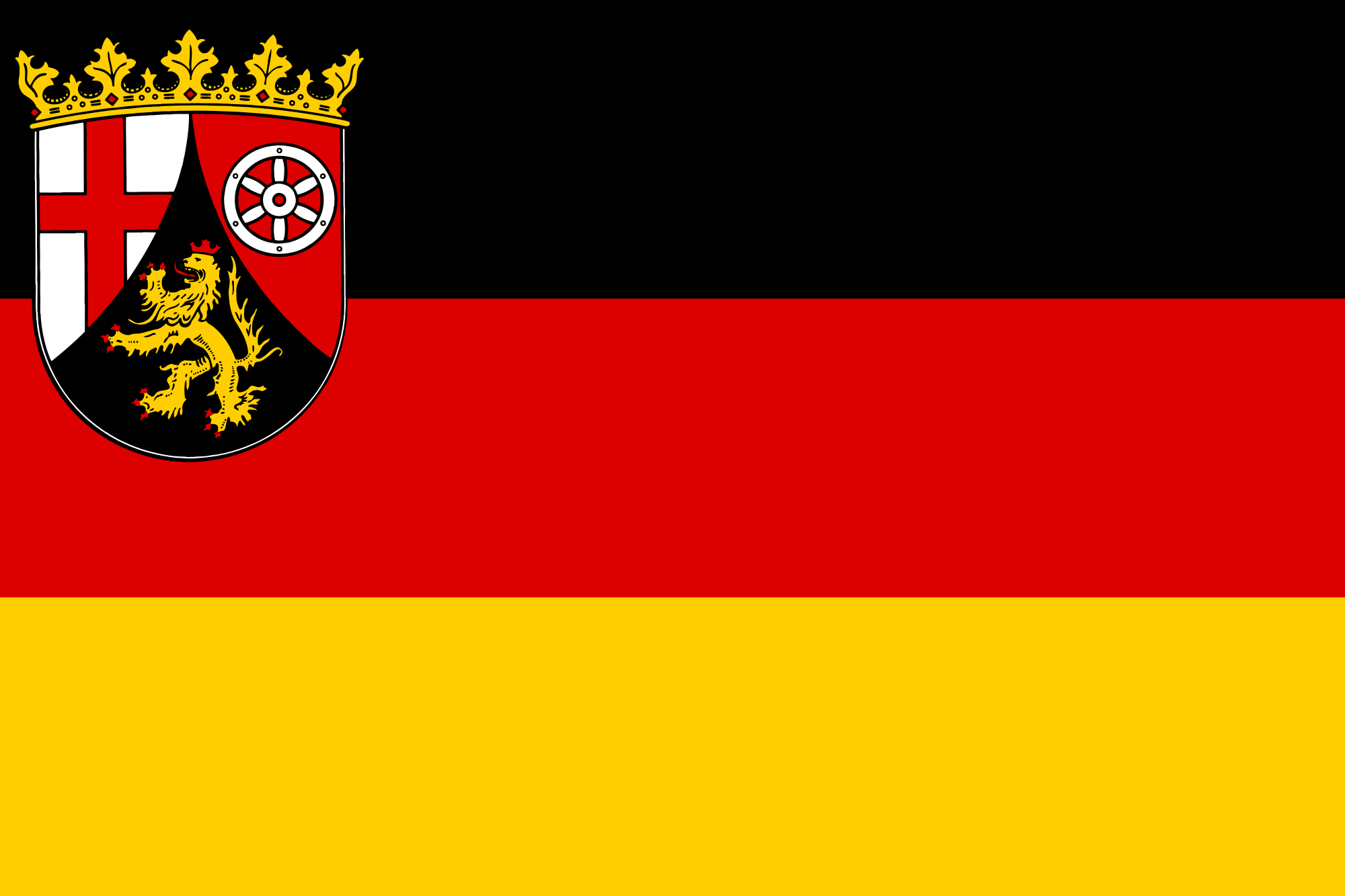 Rhineland-Palatinate
Rhineland-Palatinate

 Vacation and Travel
Vacation and Travel

 Cities founded by the Romans
Cities founded by the Romans

 World Heritage
World Heritage

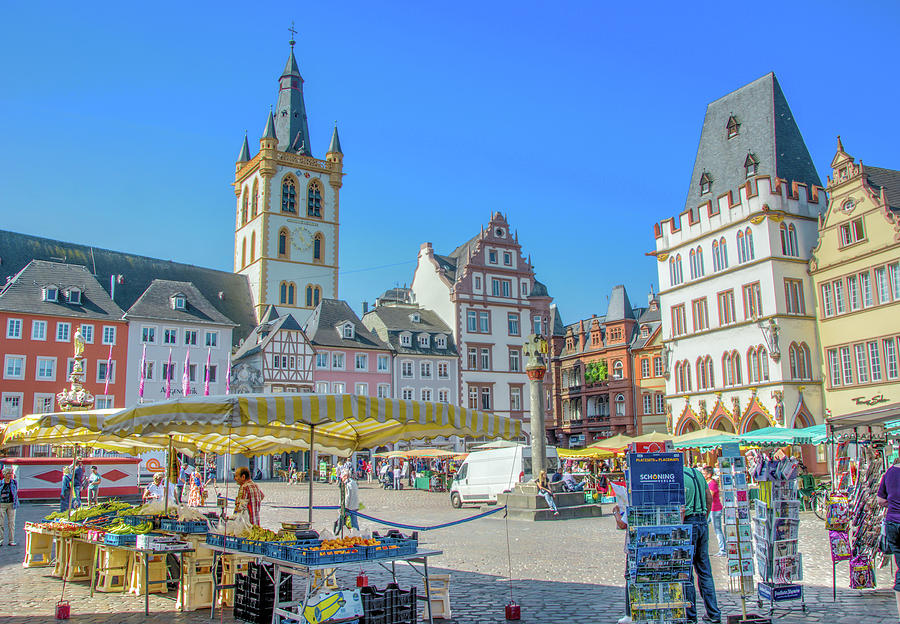
特里尔,依粤语又译堤雅(德语:Trier,法语:Trèves),德国最古老的城市,位于莱茵兰-普法尔茨州西南部,摩泽尔河岸,靠近卢森堡边境。开埠于公元前16年,曾为罗马帝国四帝共治制时期西部恺撒(副皇帝)的驻节地。特里尔不是唯一声称最古老的德国城市,但它作为“城市”有超过两千年的历史,而不是作为殖民地或者军队驻扎地,这在德国确实是最古老的。
特里尔位于莱茵兰-普法尔茨州西南部的摩泽尔河谷中,两岸是低缓的红砂岩山丘,布满葡萄田,属于著名的摩泽尔-萨尔-乌沃(Mosel-Saar-Ruwer)葡萄酒产区。
特里尔是最早的基督教在阿尔卑斯山北侧的主教教区。中世纪,特里尔大主教是一个重要的教会诸侯;他管辖的主教辖区控制了从法国边界到莱茵河的大片地区。特里尔大主教也是神圣罗马帝国的7个选帝侯之一。
特里尔也以马克思诞生地而闻名。
Trier (französisch Trèves, luxemburgisch Tréier) ist eine kreisfreie Stadt im Westen des Landes Rheinland-Pfalz. Mit etwa 110.000 Einwohnern ist sie nach Mainz, Ludwigshafen am Rhein und Koblenz dessen viertgrößte Stadt.
Die Stadt wurde vor mehr als 2000 Jahren unter dem Namen Augusta Treverorum (ab der zweiten Hälfte des 3. Jahrhunderts Treveris) gegründet und beansprucht den Titel der ältesten Stadt Deutschlands für sich. Trier beruft sich hierbei auf die längste Geschichte als bereits von den Römern anerkannte Stadt, im Gegensatz zu einer Siedlung oder einem Heerlager.
Die Römischen Baudenkmäler in Trier zählen seit 1986 zum UNESCO-Welterbe. Hierzu gehören Amphitheater, Barbarathermen, Kaiserthermen, Konstantinbasilika, Porta Nigra, Römerbrücke sowie die Igeler Säule in Igel. Ebenfalls zum Trierer Weltkulturerbe zählt der im Kern romanische Dom und die frühgotische Liebfrauenkirche. Darüber hinaus gibt es in Trier Kulturdenkmäler aus nahezu allen Epochen von der Frühgeschichte bis zum 21. Jahrhundert.
Trier ist Sitz der Universität Trier und der Hochschule Trier, der Verwaltung des Landkreises Trier-Saarburg, der Verwaltung der Verbandsgemeinde Trier-Land, der Aufsichts- und Dienstleistungsdirektion (ADD, bis 1999 Bezirksregierung Trier), mehrerer Dienststellen des Landesuntersuchungsamtes (LUA), einer Dienststelle des Landesamtes für Soziales, Jugend und Versorgung Rheinland-Pfalz und einer römisch-katholischen Diözese (Bistum Trier, das älteste nördlich der Alpen) und des evangelischen Kirchenkreises Trier.
トリーア(ドイツ語: Trier [tʁiːɐ̯] (![]() 音声ファイル), フランス語: Trèves [tʁɛv])は、ドイツ連邦共和国ラインラント=プファルツ州の都市。人口は約10万人(2005年)。トリアーとも表記される。
音声ファイル), フランス語: Trèves [tʁɛv])は、ドイツ連邦共和国ラインラント=プファルツ州の都市。人口は約10万人(2005年)。トリアーとも表記される。
かつては舞台ドイツ語式発音に基づいてトリール、トリエルと呼ばれたが、近年では現在の標準ドイツ語の発音に近い「トリーア」が主に用いられる。
Trier (German pronunciation: [tʁiːɐ̯] (![]() listen); Luxembourgish: Tréier [ˈtʀɜɪ̯ɐ]), formerly known in English as Treves (French: Trèves, IPA: [tʁɛv]) and Triers (see also names in other languages), is a city in Germany on the banks of the Moselle. Trier lies in a valley between low vine-covered hills of red sandstone in the west of the state of Rhineland-Palatinate, near the border with Luxembourg and within the important Moselle wine region. The German philosopher and one of the founders of Marxism, Karl Marx was born in the city in 1818.
listen); Luxembourgish: Tréier [ˈtʀɜɪ̯ɐ]), formerly known in English as Treves (French: Trèves, IPA: [tʁɛv]) and Triers (see also names in other languages), is a city in Germany on the banks of the Moselle. Trier lies in a valley between low vine-covered hills of red sandstone in the west of the state of Rhineland-Palatinate, near the border with Luxembourg and within the important Moselle wine region. The German philosopher and one of the founders of Marxism, Karl Marx was born in the city in 1818.
Founded by the Celts in the late-4th century BC as Treuorum, it was later conquered by the Romans in the late-1st century BC and renamed Trevorum or Augusta Treverorum (Latin for "The City of Augustus among the Treveri"). Trier may be the oldest city in Germany.[2][3] It is also the oldest seat of a bishop north of the Alps. In the Middle Ages, the Archbishop-Elector of Trier was an important prince of the church, as the archbishop-electorate controlled land from the French border to the Rhine. The Archbishop-Elector also had great significance as one of the seven electors of the Holy Roman Empire.
With an approximate population of 105,000, Trier is the fourth-largest city in its state, after Mainz, Ludwigshafen, and Koblenz.[4] The nearest major cities are Luxembourg (50 km or 31 mi to the southwest), Saarbrücken (80 kilometres or 50 miles southeast), and Koblenz (100 km or 62 mi northeast).
The University of Trier, the administration of the Trier-Saarburg district and the seat of the ADD (Aufsichts- und Dienstleistungsdirektion), which until 1999 was the borough authority of Trier, and the Academy of European Law (ERA) are all based in Trier. It is one of the five "central places" of the state of Rhineland-Palatinate. Along with Luxembourg, Metz and Saarbrücken, fellow constituent members of the QuattroPole union of cities, it is central to the greater region encompassing Saar-Lor-Lux (Saarland, Lorraine and Luxembourg), Rhineland-Palatinate, and Wallonia.
Trèves (en allemand : Trier /ˈtʁiːɐ̯/ Écouter, en luxembourgeois : Tréier) est une ville et un arrondissement d'Allemagne, dans le Land de Rhénanie-Palatinat. La ville est située sur la Moselle. En 2008, la ville comptait 104 640 habitants.
Treviri (AFI: [ˈtrɛviri][1]; in tedesco: Trier, in francese: Trèves, in lussemburghese: Tréier) è una città extracircondariale nella parte occidentale del Land tedesco della Renania-Palatinato; è sede di una prestigiosa università.
Pur essendo una città extracircondariale, ospita la sede amministrativa del circondario (Landkreis) di Treviri-Saarburg.
La città è nota per aver dato i natali a Karl Marx.
Tréveris (en alemán, Trier; en francés, Trèves; véanse los nombres en otros idiomas) es una ciudad de Renania-Palatinado, Alemania, ubicada en la ribera derecha del río Mosela. Dista unos 9 km de Luxemburgo, 35 km de Francia y 50 km de Bélgica. Tiene 100 000 habitantes aproximadamente. Se considera la ciudad más antigua de Alemania y en 1986, la Unesco declaró el conjunto de «monumentos romanos, la catedral de San Pedro y la iglesia de Nuestra Señora en Tréveris» Patrimonio de la Humanidad.1. En Tréveris nació Karl Marx el 5 de mayo de 1818.
 Grand Est
Grand Est
 Centre-Val de Loire
Centre-Val de Loire
 Balearic Islands
Balearic Islands
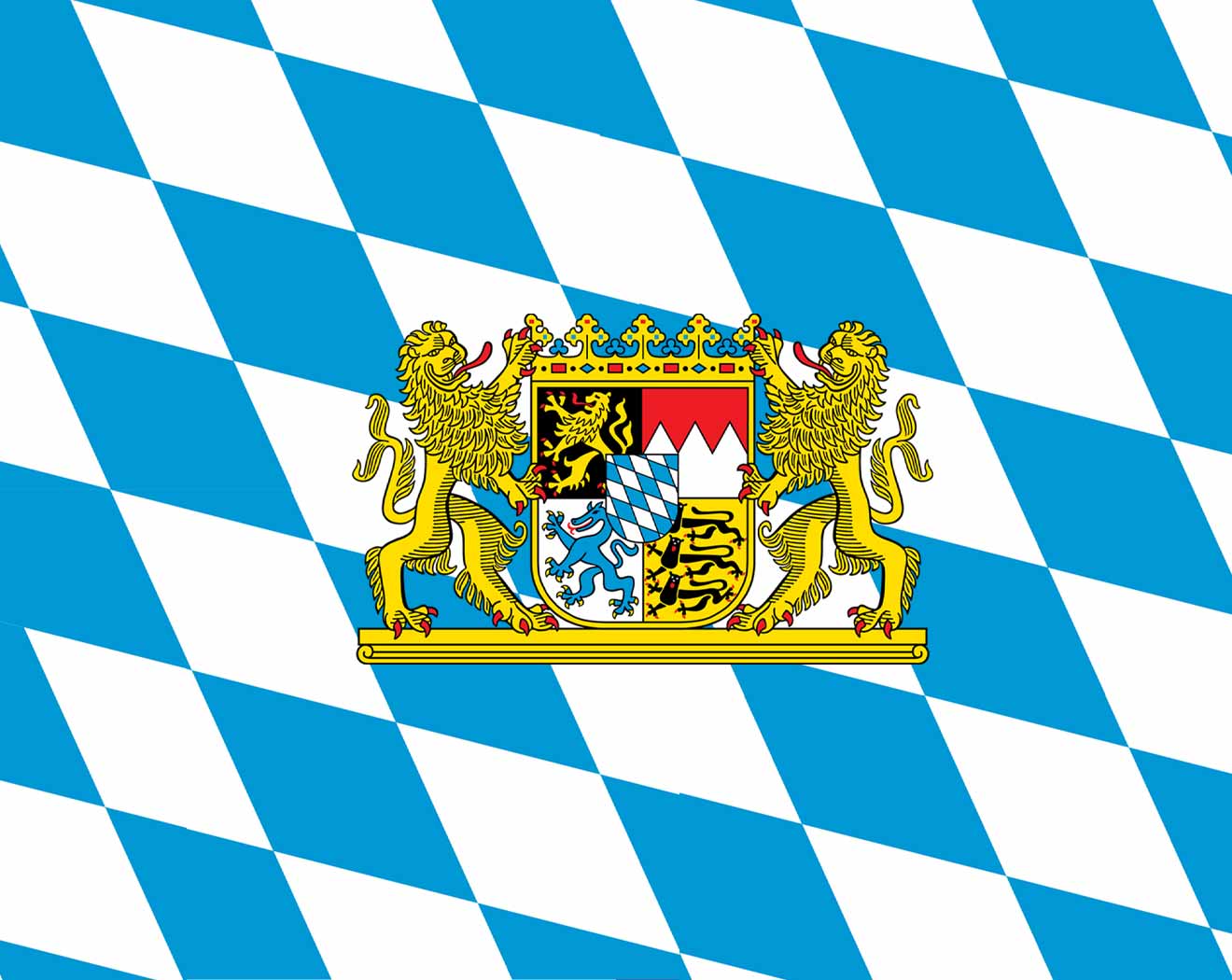 Bavaria
Bavaria
